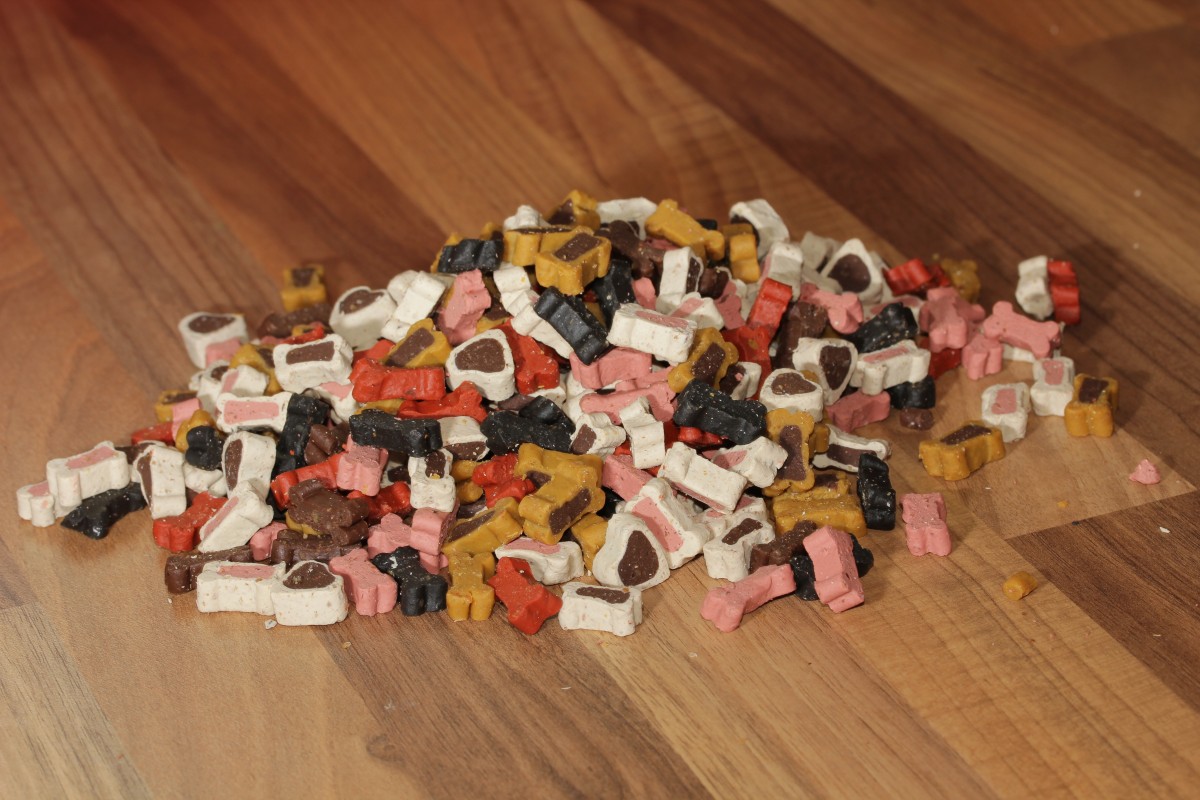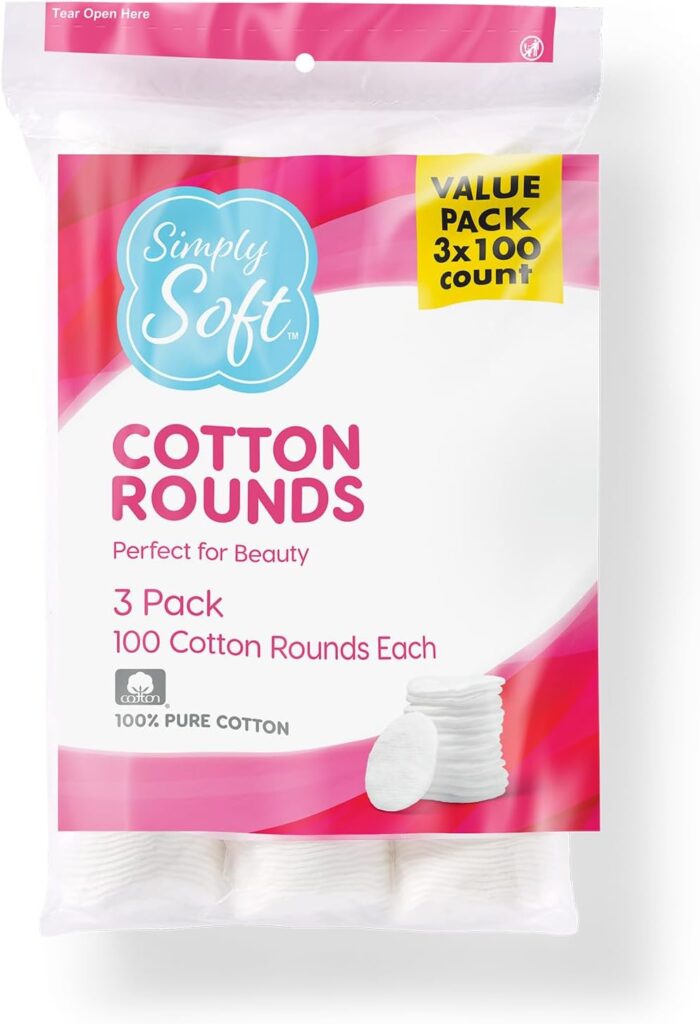How to Groom Your Dog at Home
Grooming your dog at home may seem like a daunting task, but it’s a wonderful way to bond with your furry friend while keeping them healthy and happy. Whether your dog has a short coat, a long luxurious mane, or something in between, grooming at home can help maintain their hygiene and appearance—without the need for frequent trips to the groomer. Here’s everything you need to know to become a DIY dog grooming pro.
This website includes affiliate links, which means I may earn a commission if you make a purchase through these links, at no extra cost to you. All recommendations are based on professional expertise and thorough research.
1. Prepare Your Grooming Space
Before diving into grooming, make sure you’ve set up a comfortable grooming space for your dog. Find an area where you can minimize distractions, such as a bathroom or backyard. Make sure you have easy access to all your grooming tools to keep everything organized and smooth.
You’ll need a few key items, like a non-slip mat (link to Amazon to various mats) if you’re grooming in the tub, a towel (Amazon link to various choices) for drying off, and plenty of treats to keep your dog calm and happy throughout the process.
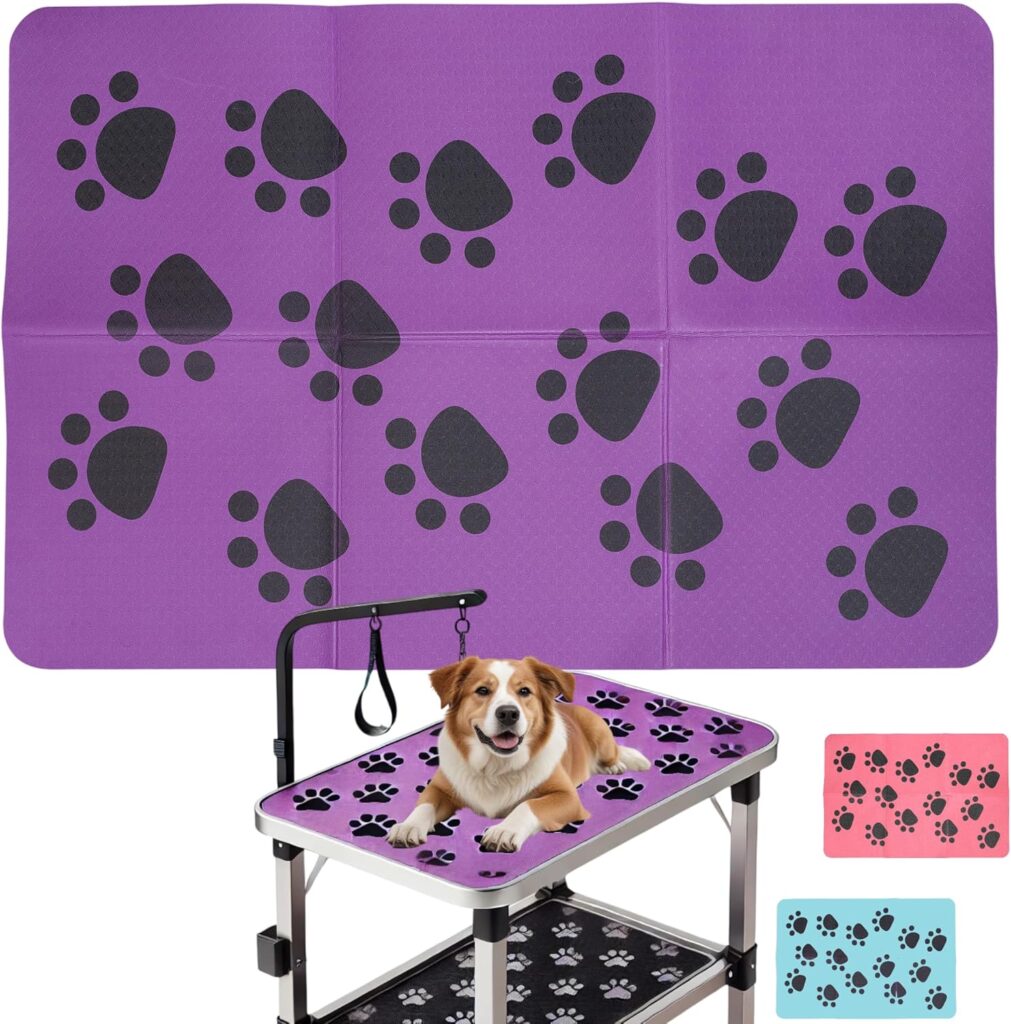
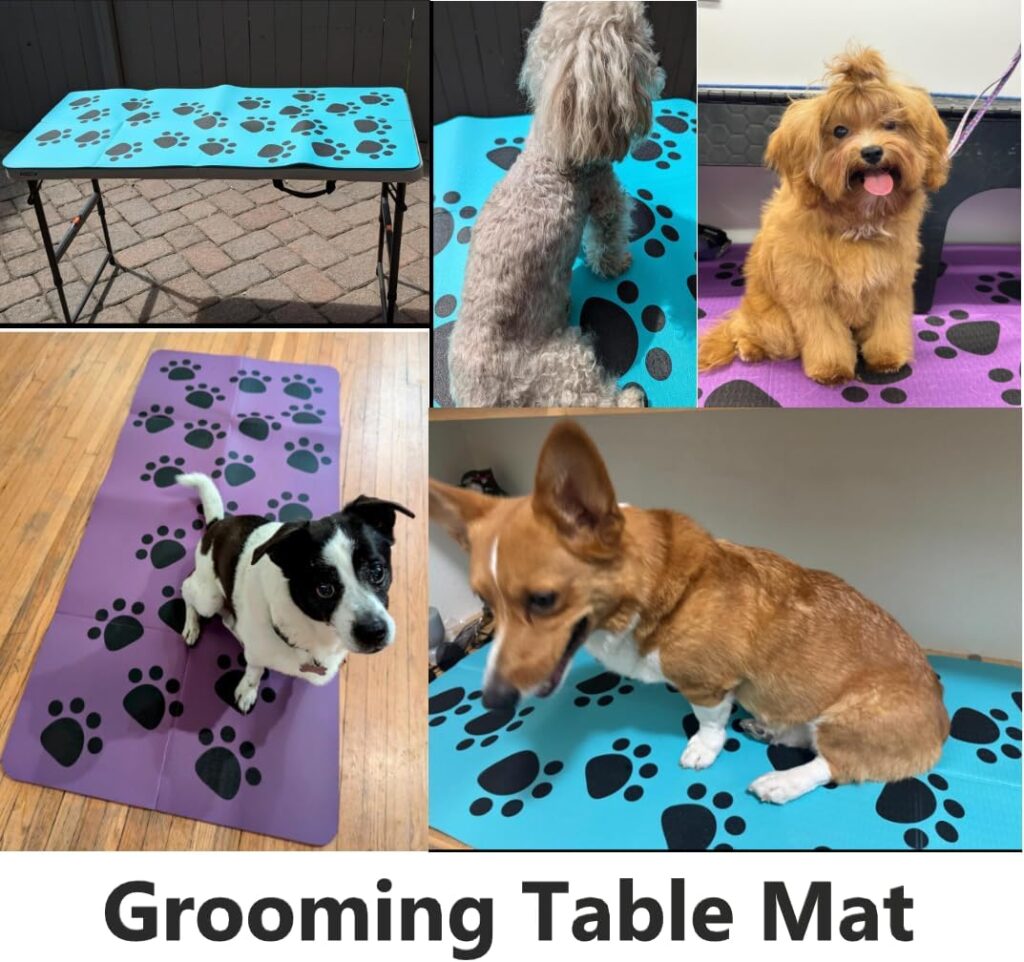
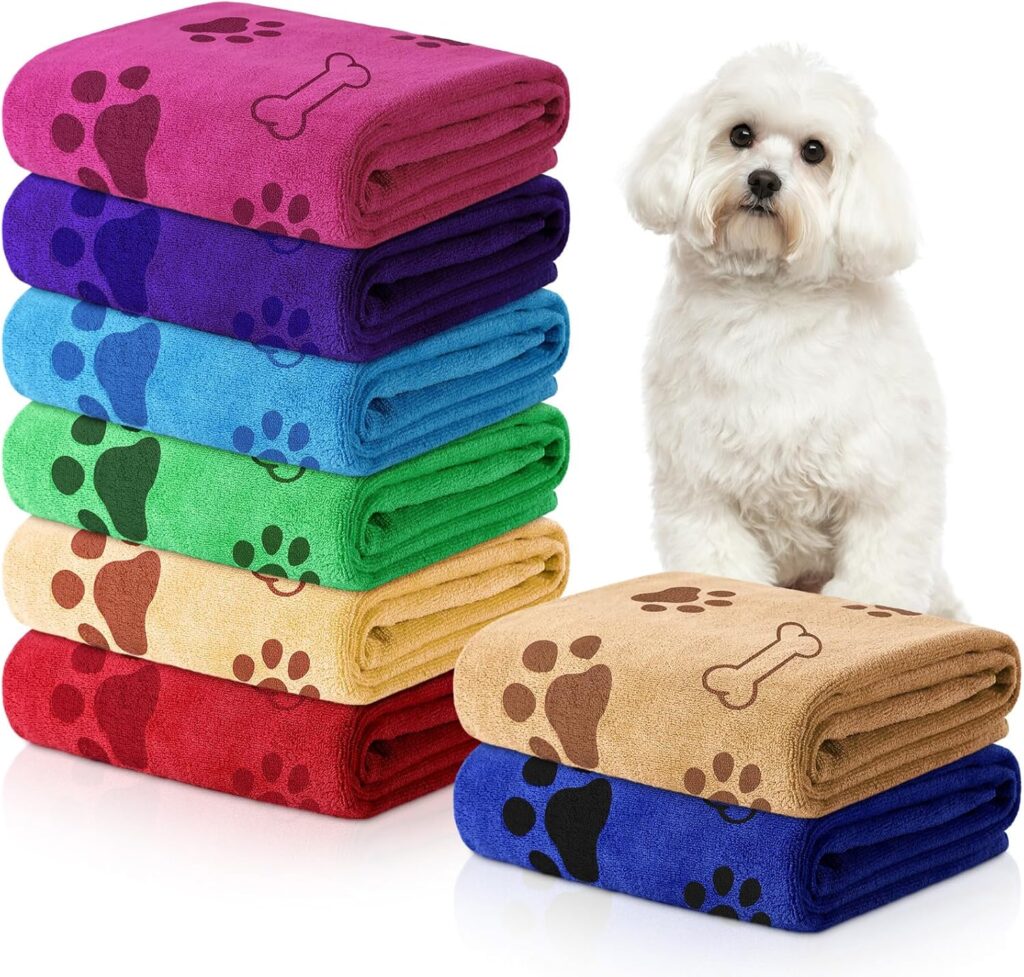
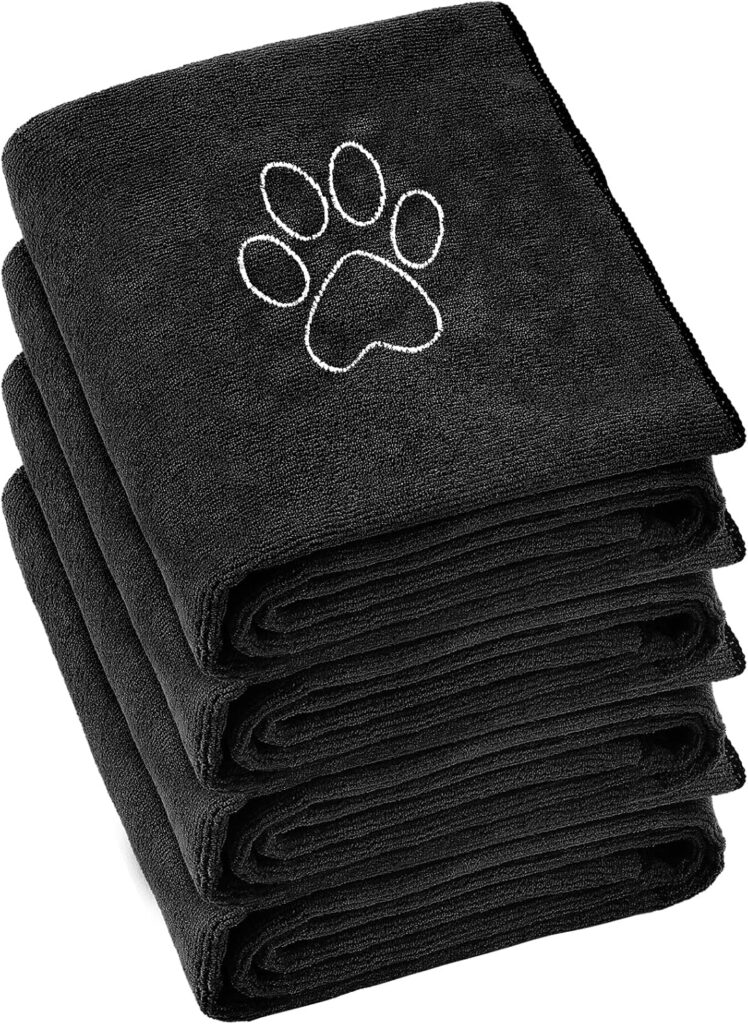
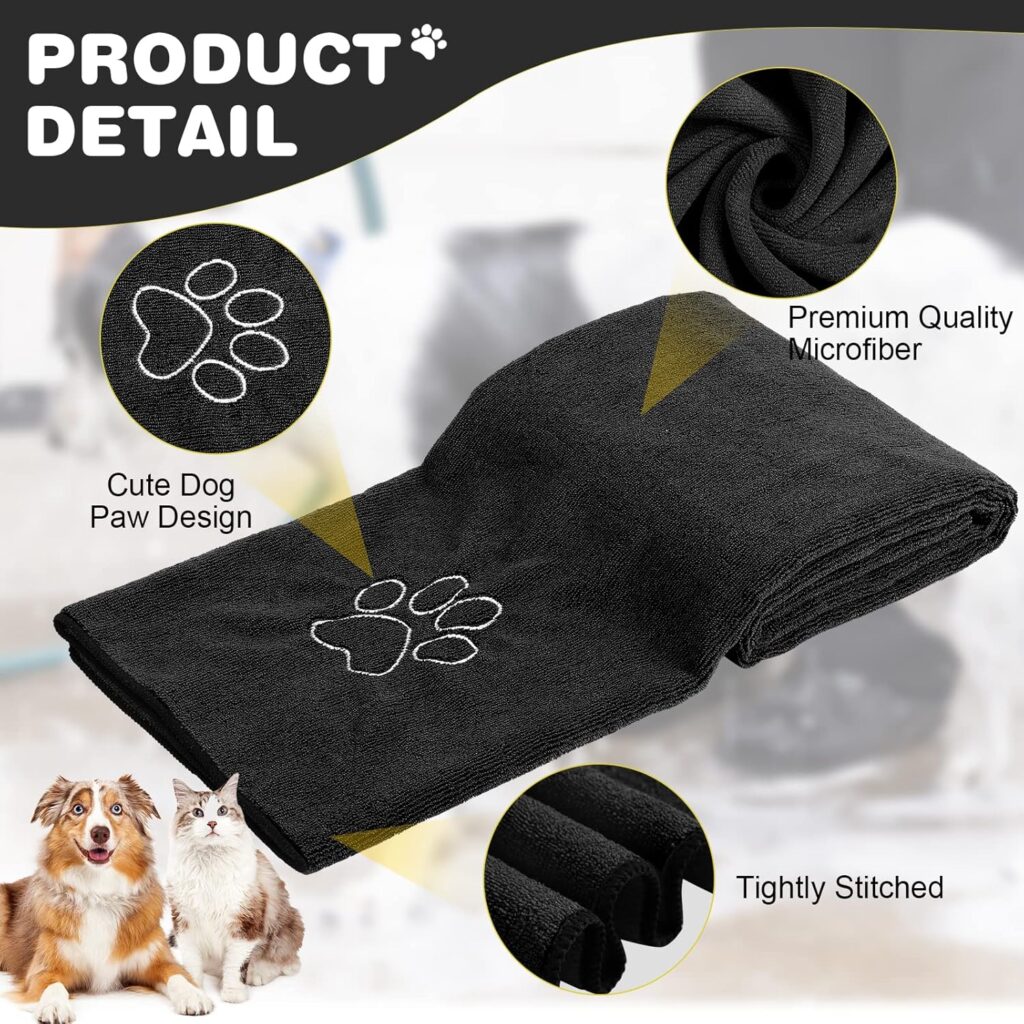
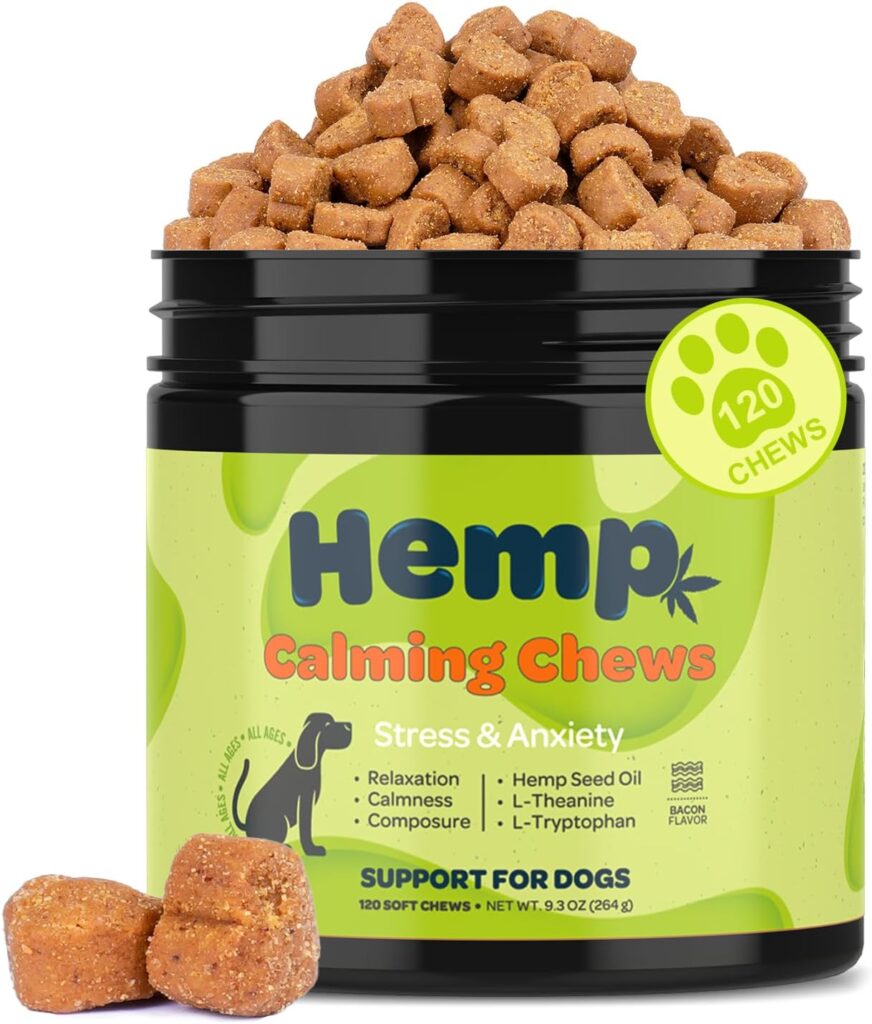
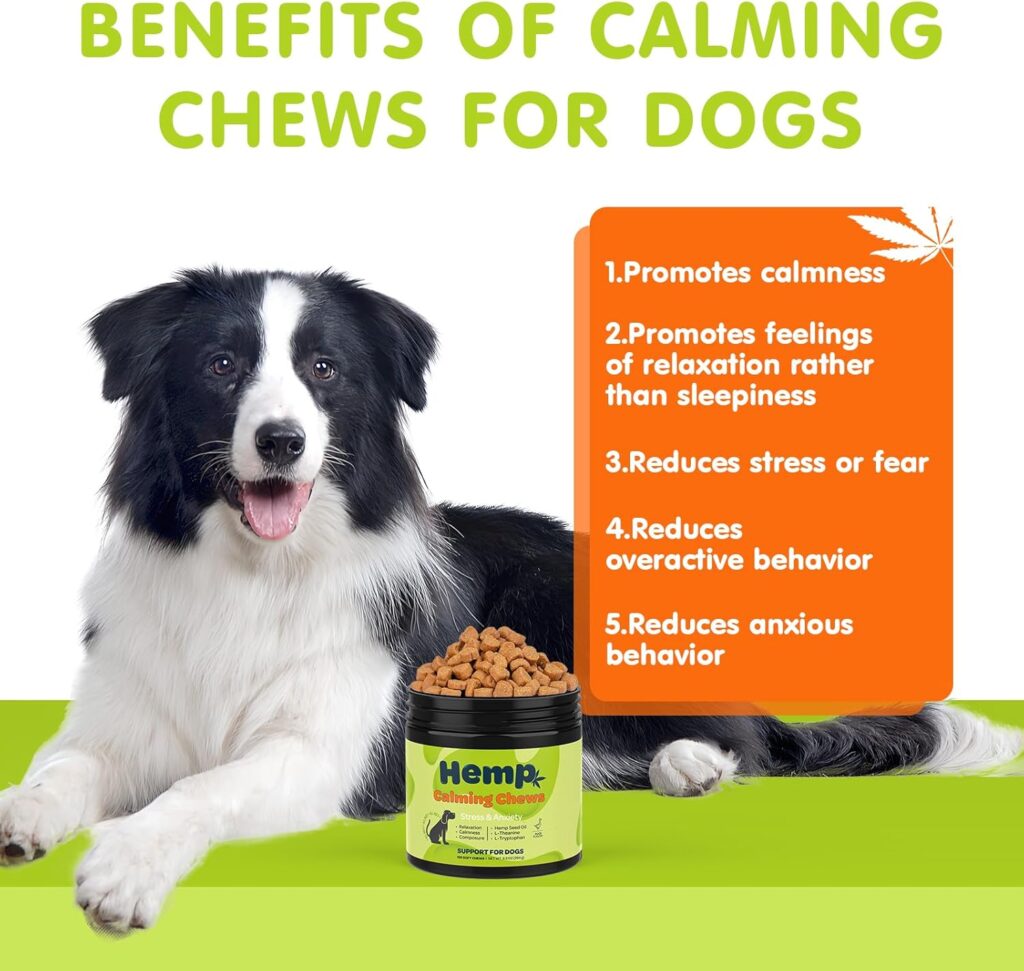
One highly rated non-slip bath mat you can consider is the Gorilla Grip Original Patented Bath Mat on Amazon, which has thousands of positive reviews.
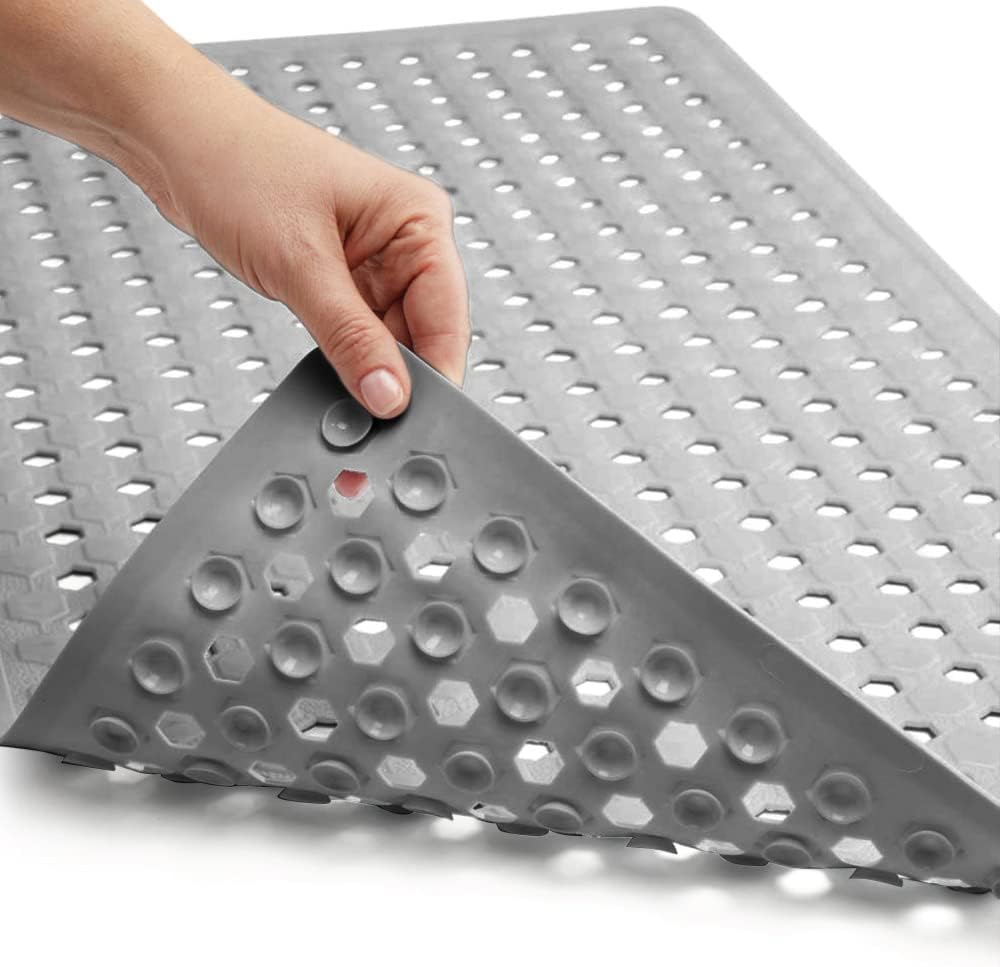
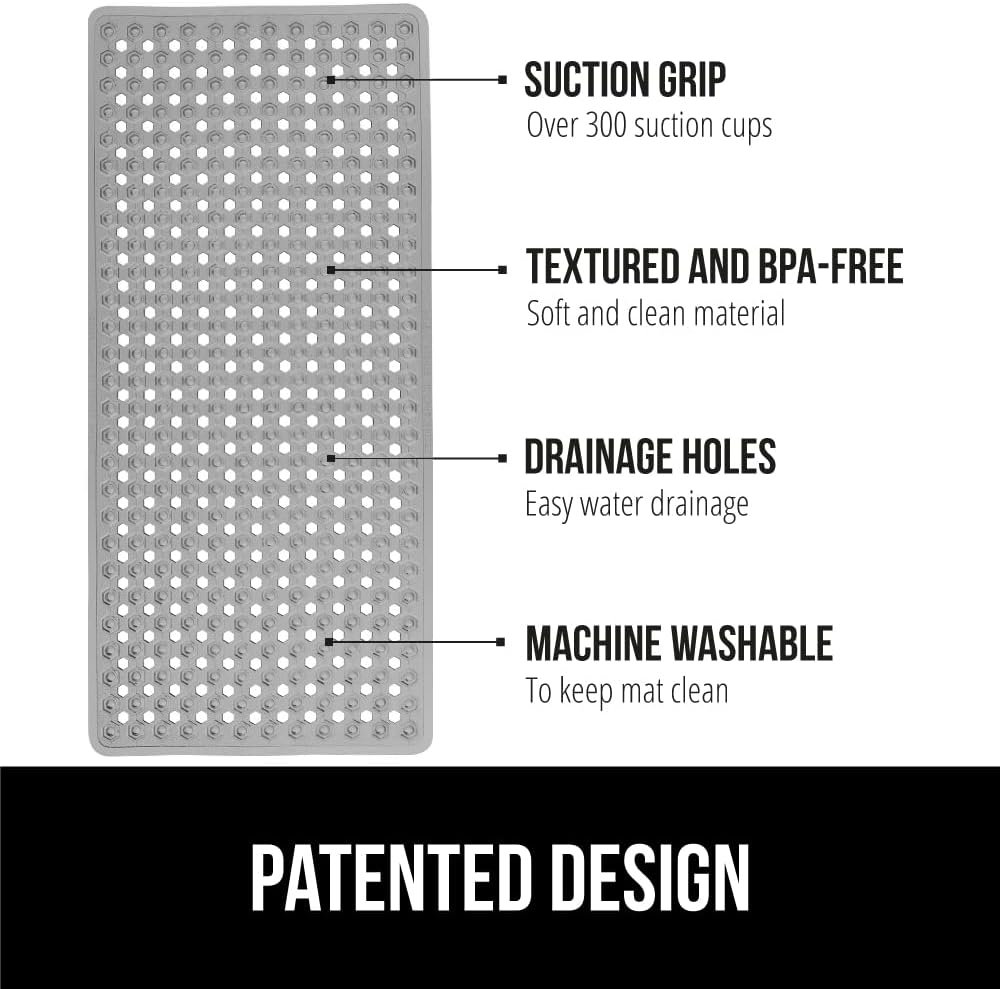
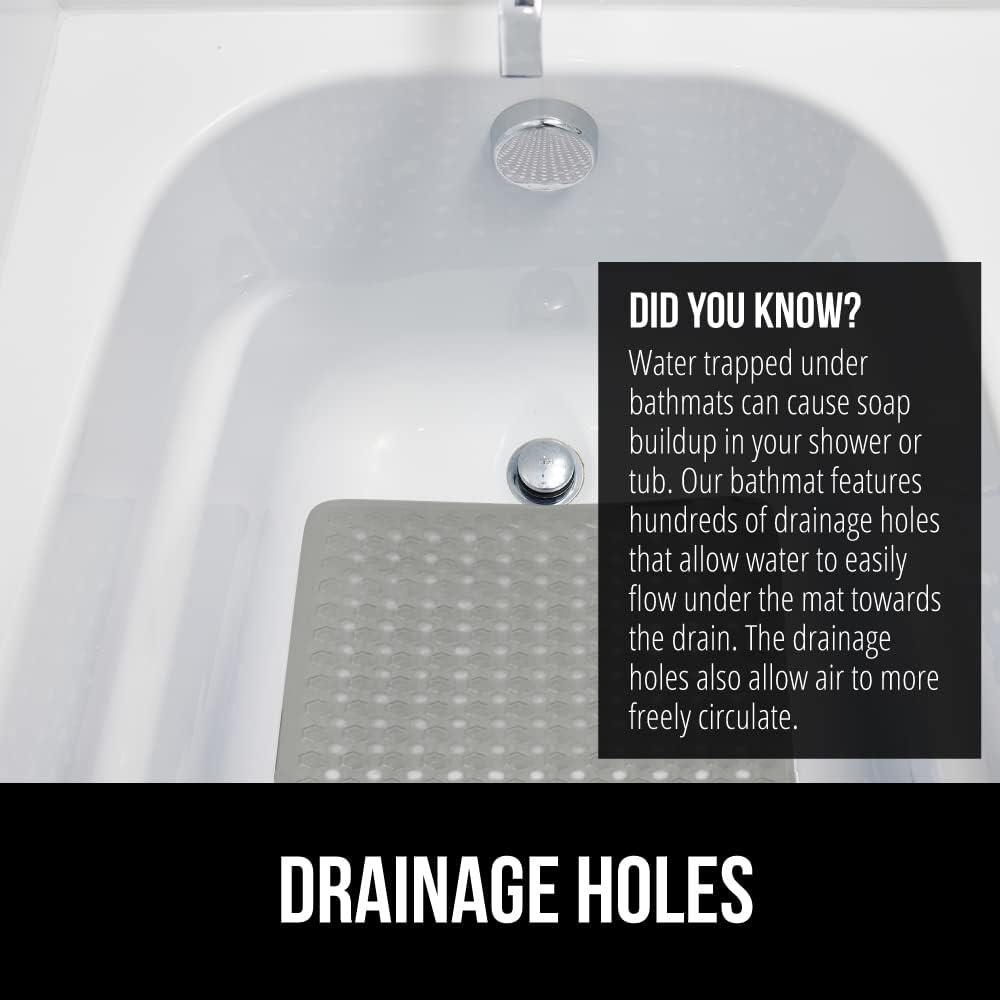
2. Brushing Your Dog’s Coat
One of the most important steps in grooming is brushing. Brushing helps remove tangles, prevents matting, and distributes your dog’s natural oils to keep their coat shiny and healthy. The type of brush you need will depend on your dog’s coat type.
For short-haired dogs, consider using a bristle brush (link to Amazon) or rubber curry brush like the Hertzko Self-Cleaning Slicker Brush. (link to Amazon). This brush works great for removing loose fur and has thousands of high ratings on Amazon.
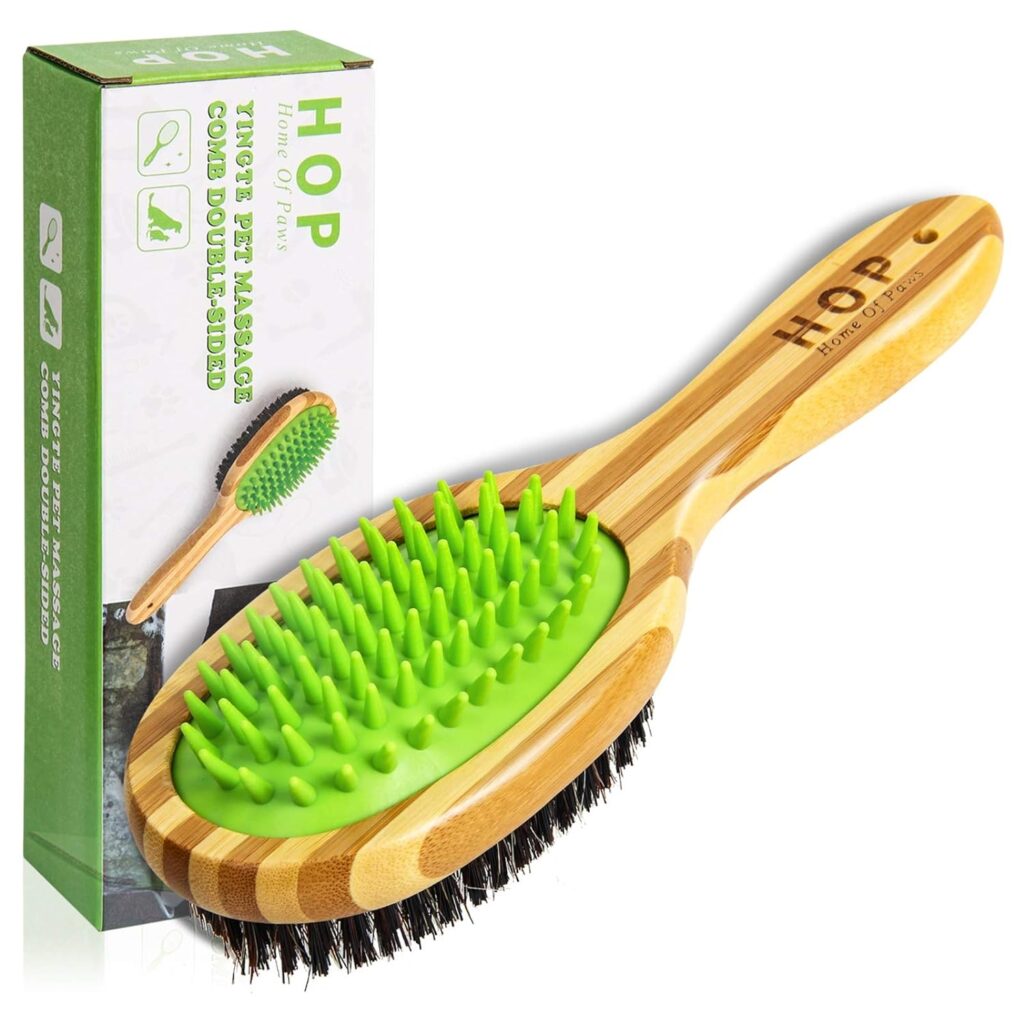
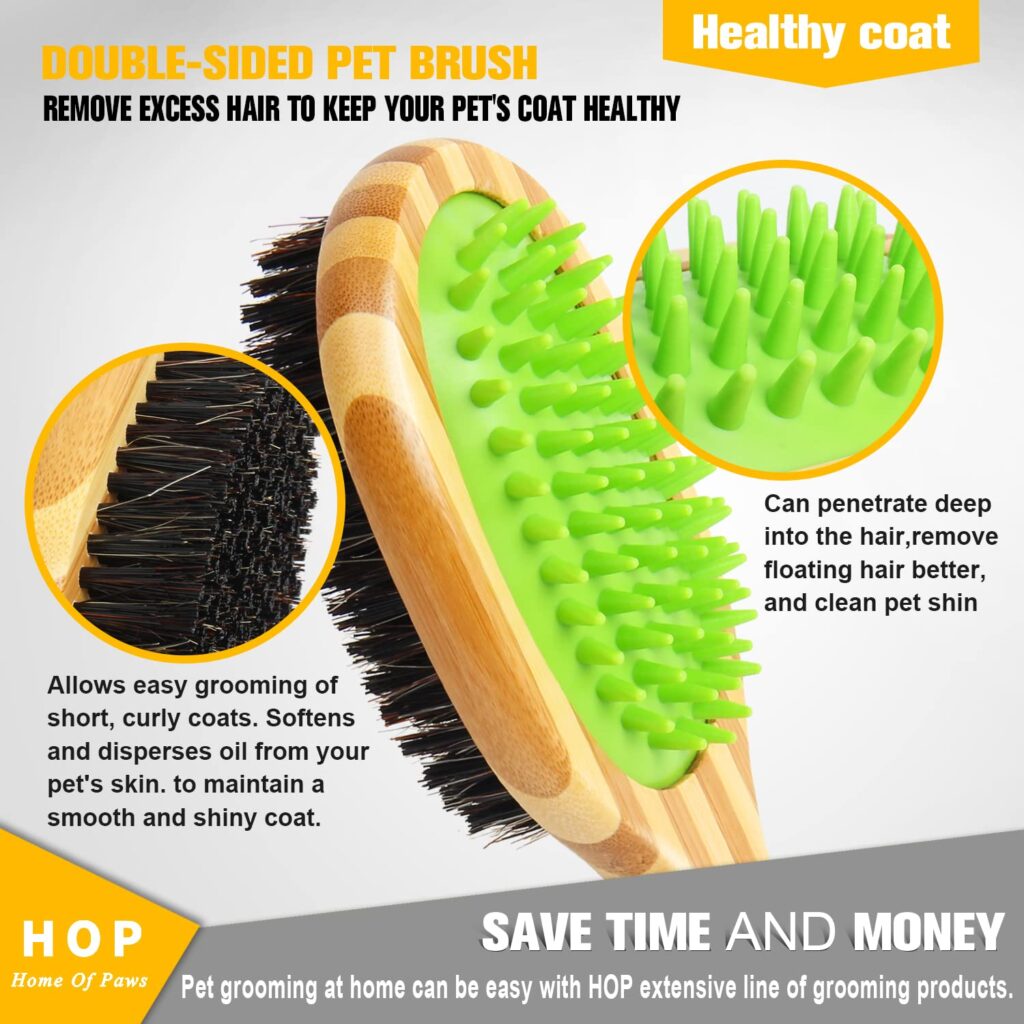
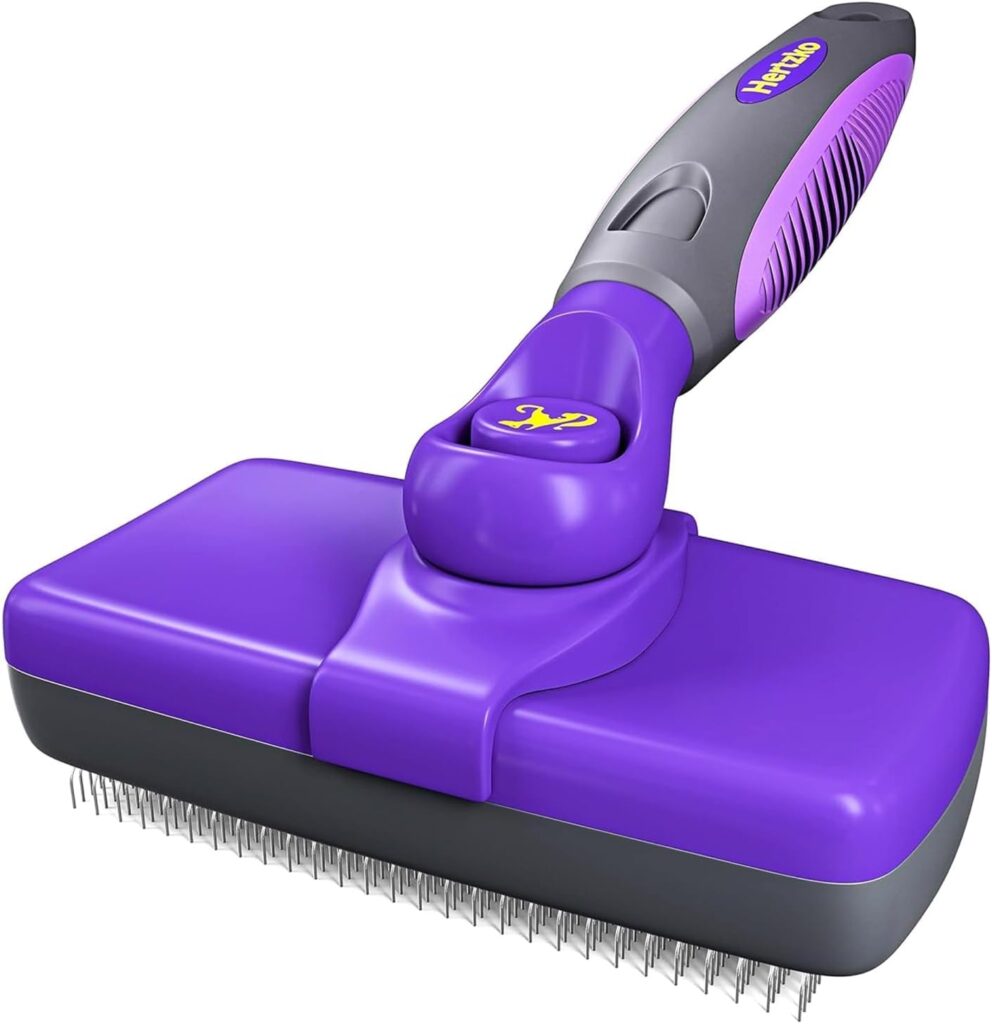
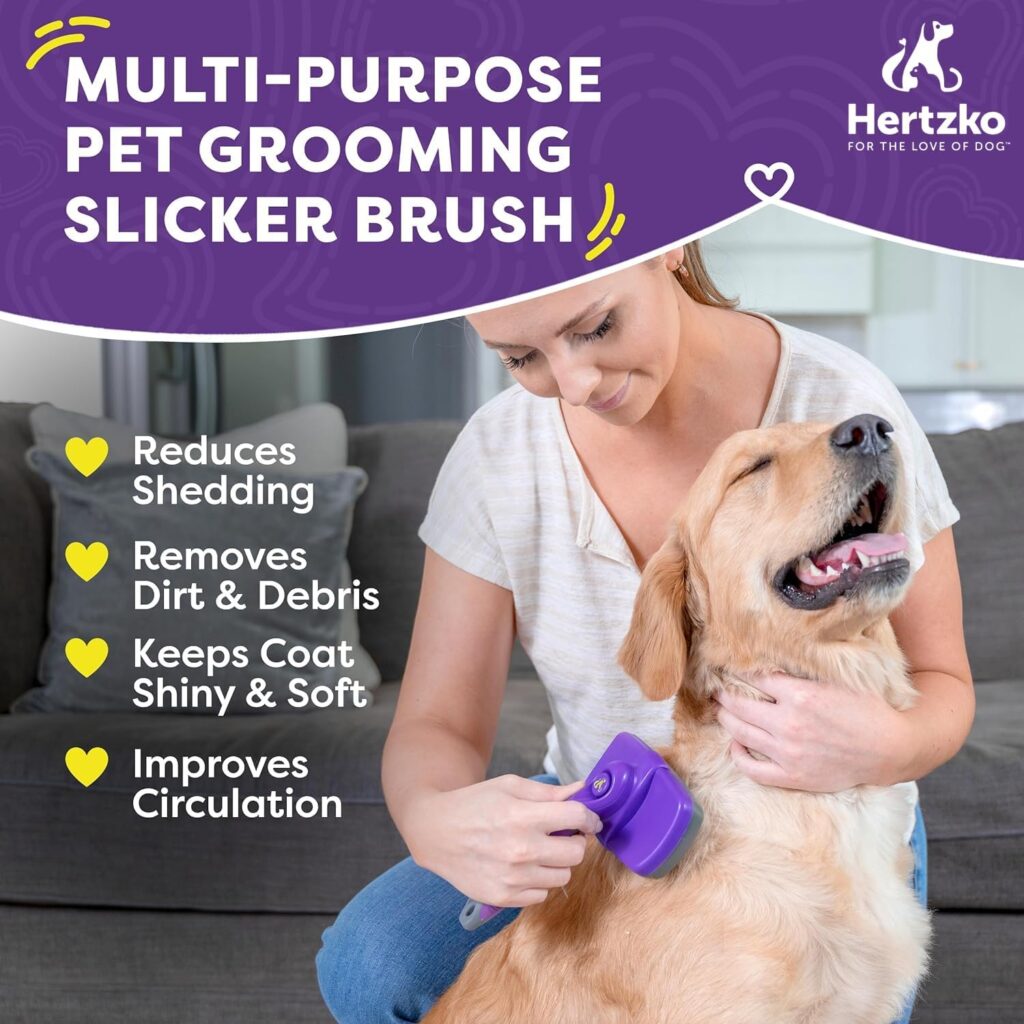
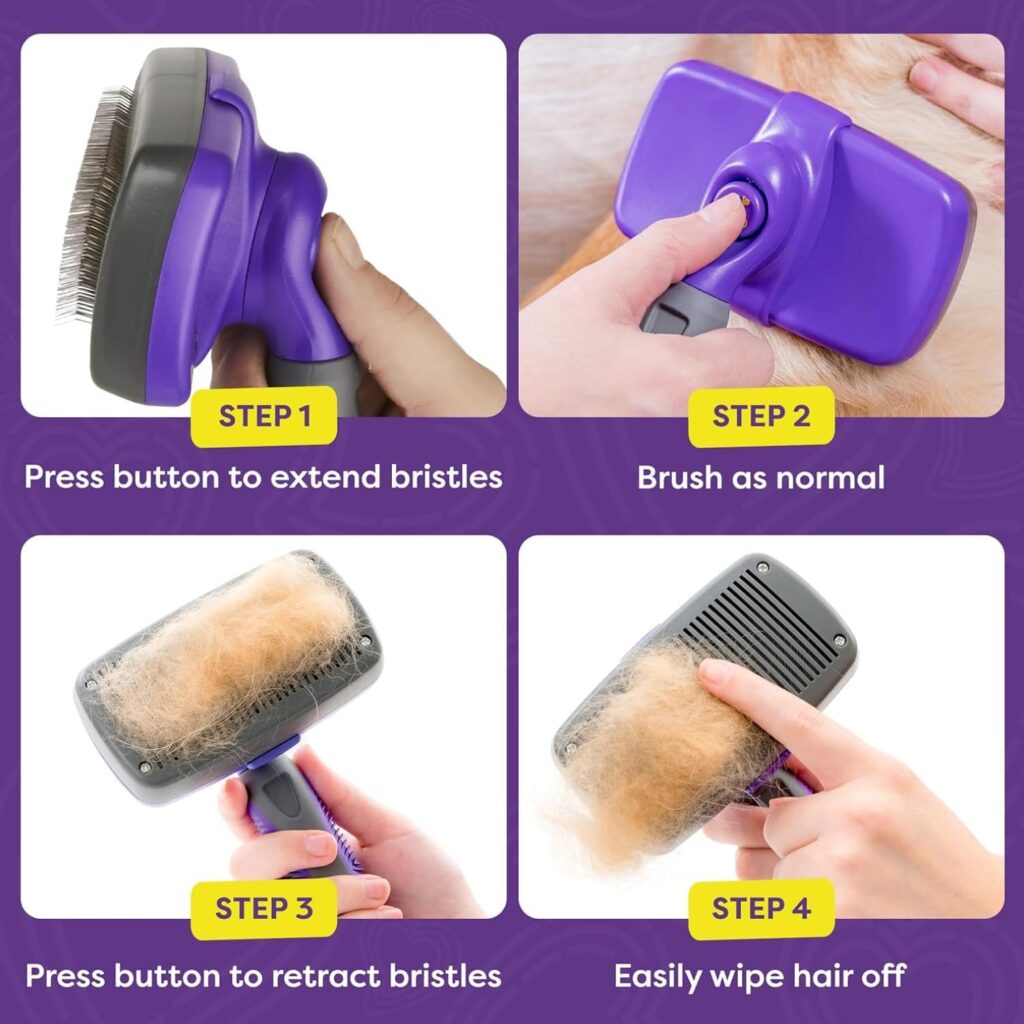
For long-haired dogs, a slicker brush and undercoat rake are key. The FURminator Undercoat Deshedding Tool (link to Amazon) is extremely popular and effective at reaching those pesky loose hairs beneath the topcoat. Brushing your dog at least two to three times a week can help reduce shedding and keep their fur tangle-free.
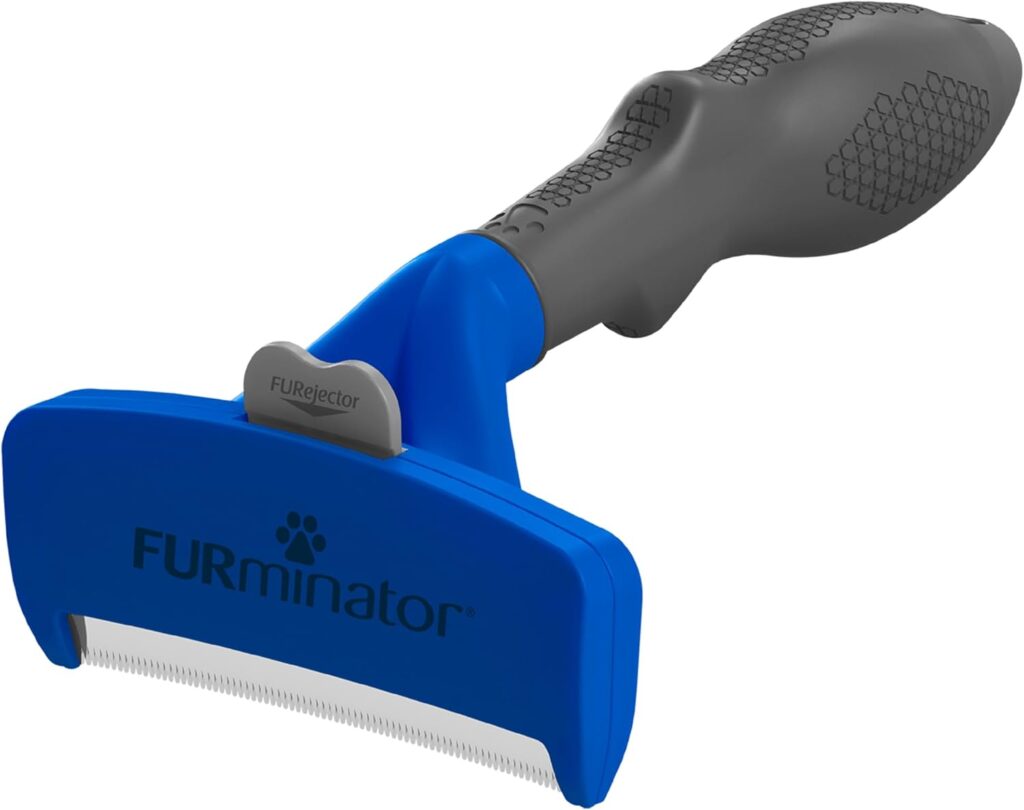
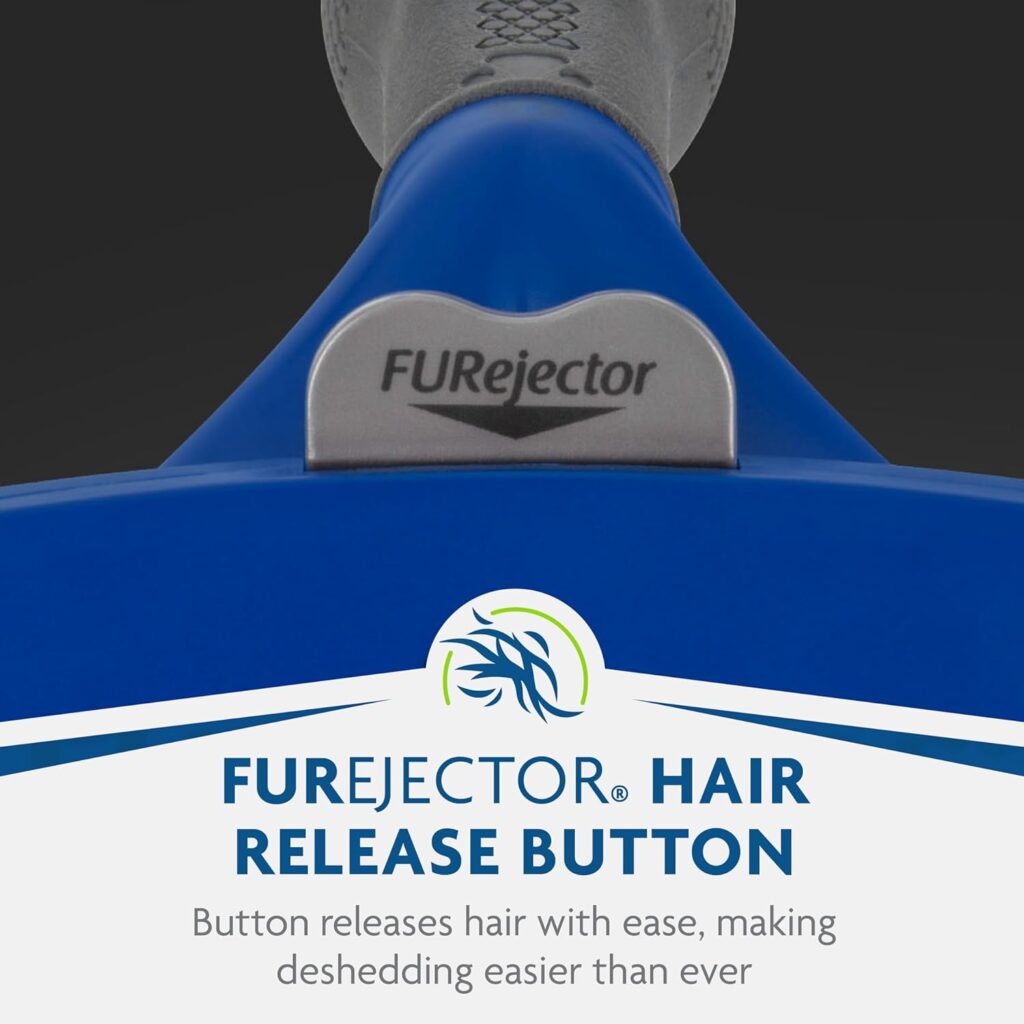
If you find matting, be sure to carefully untangle it with a dematting tool like the Poodle Pet Dematting Comb, which is also available on Amazon and is praised for its safety and ease of use.
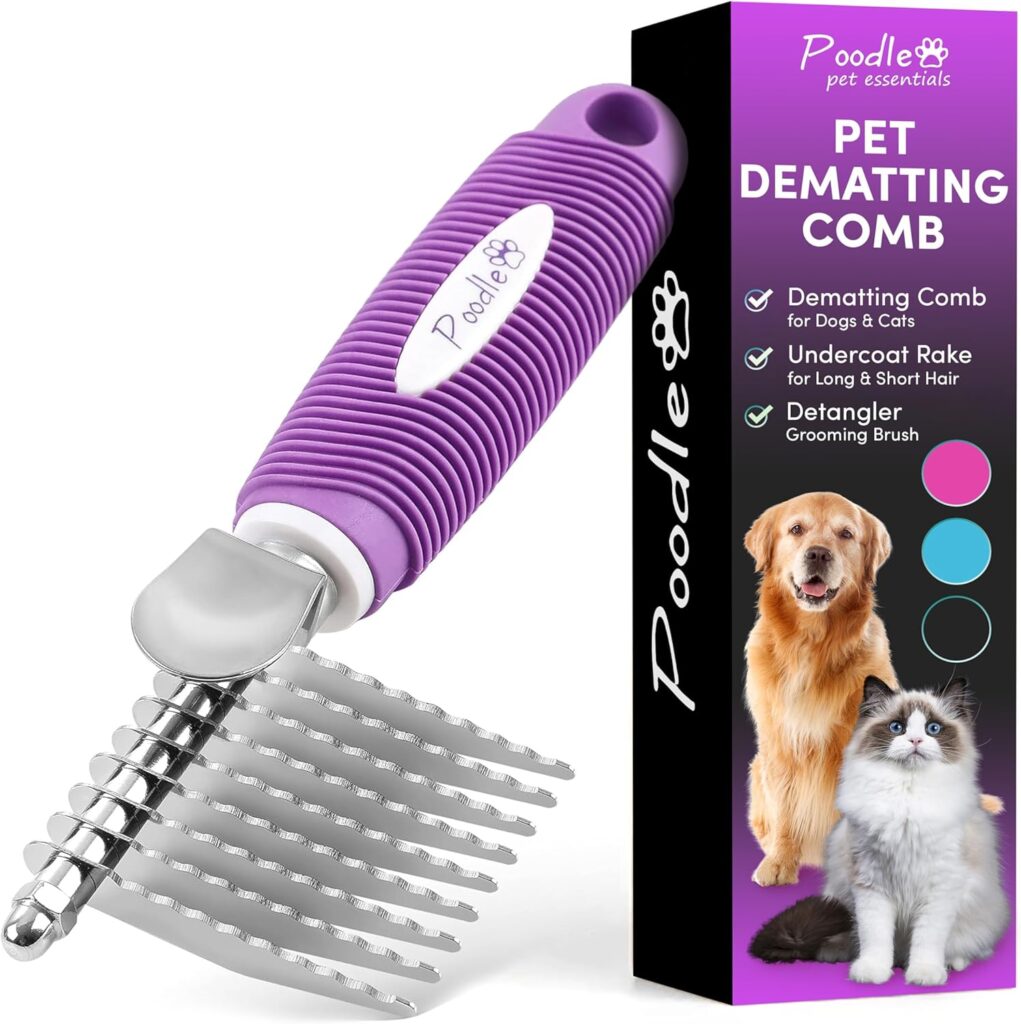
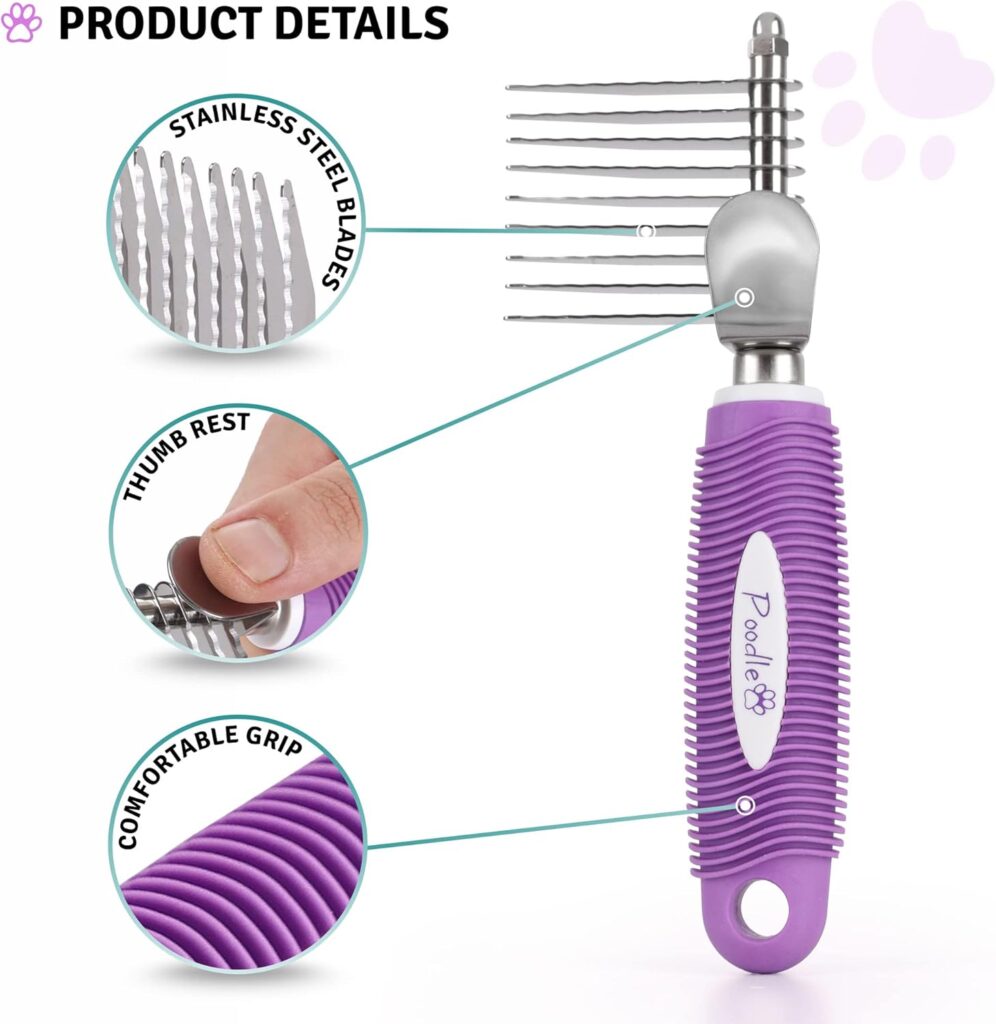
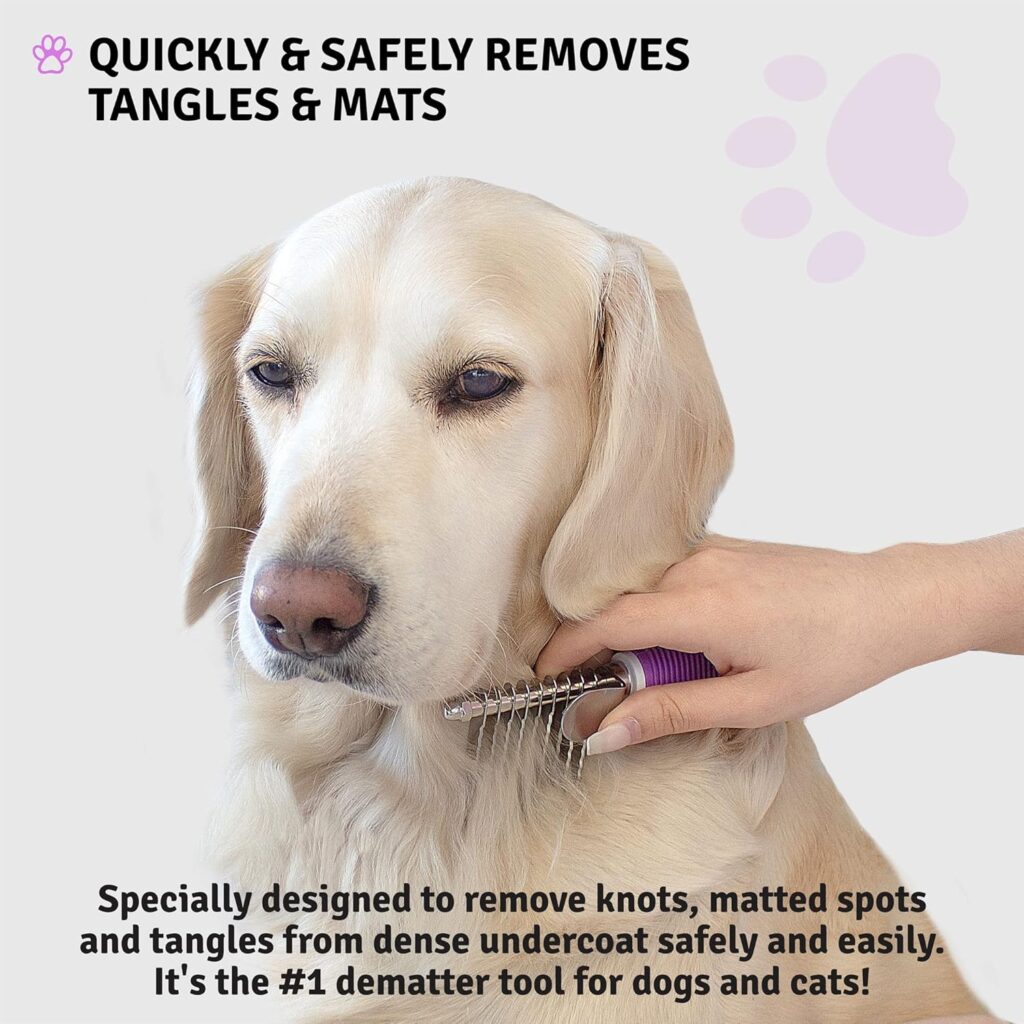
3. Bathing Your Dog
When it’s bath time, remember to use a dog-specific shampoo to protect your dog’s skin and coat. Human shampoos are not pH-balanced for dogs and can lead to irritation. One excellent shampoo to try is the Earthbath Oatmeal & Aloe Dog Shampoo, (Link to Amazon) which is great for dogs with sensitive skin. You’ll also need a hand-held showerhead or a cup for rinsing.
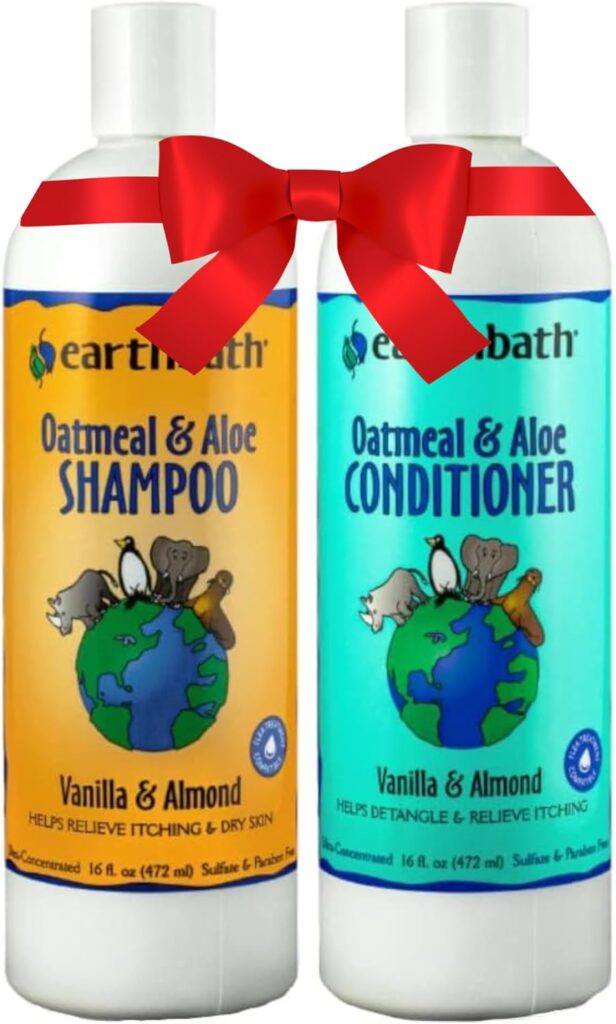
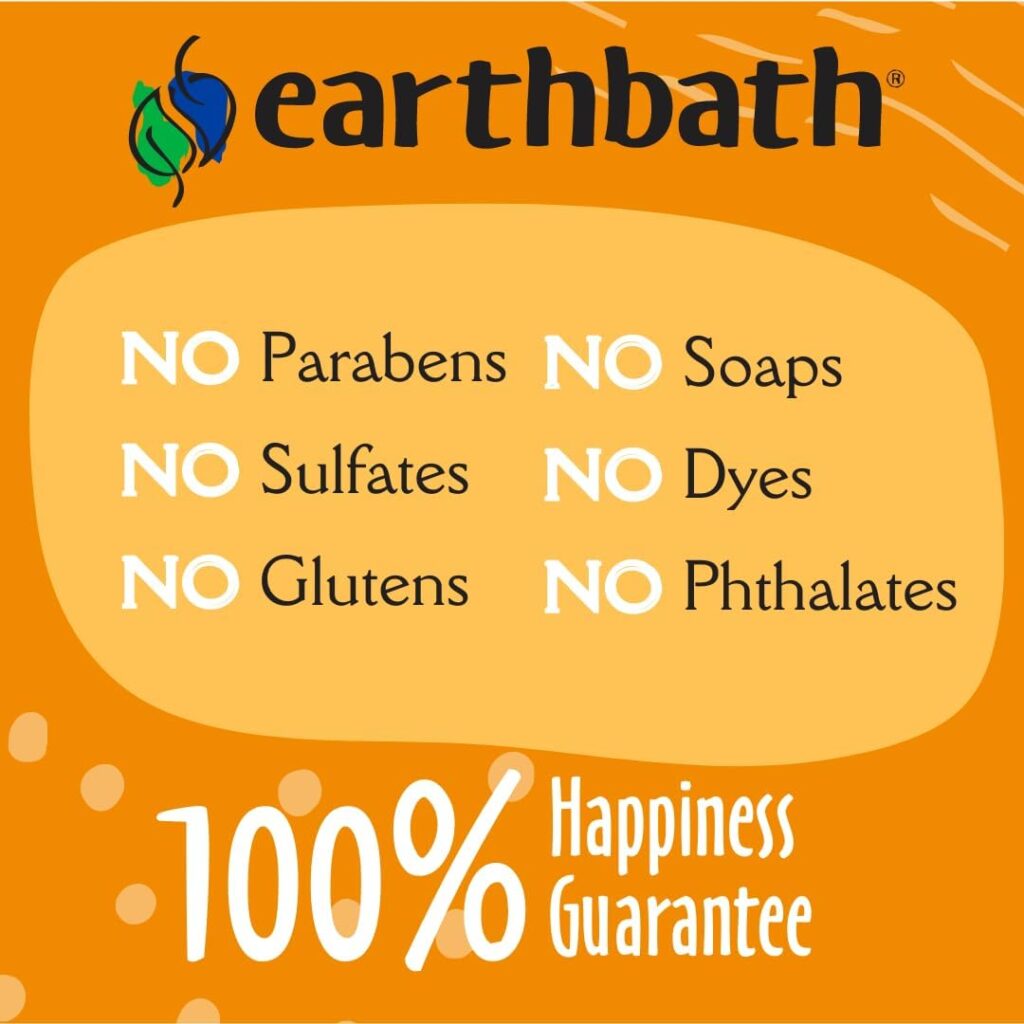
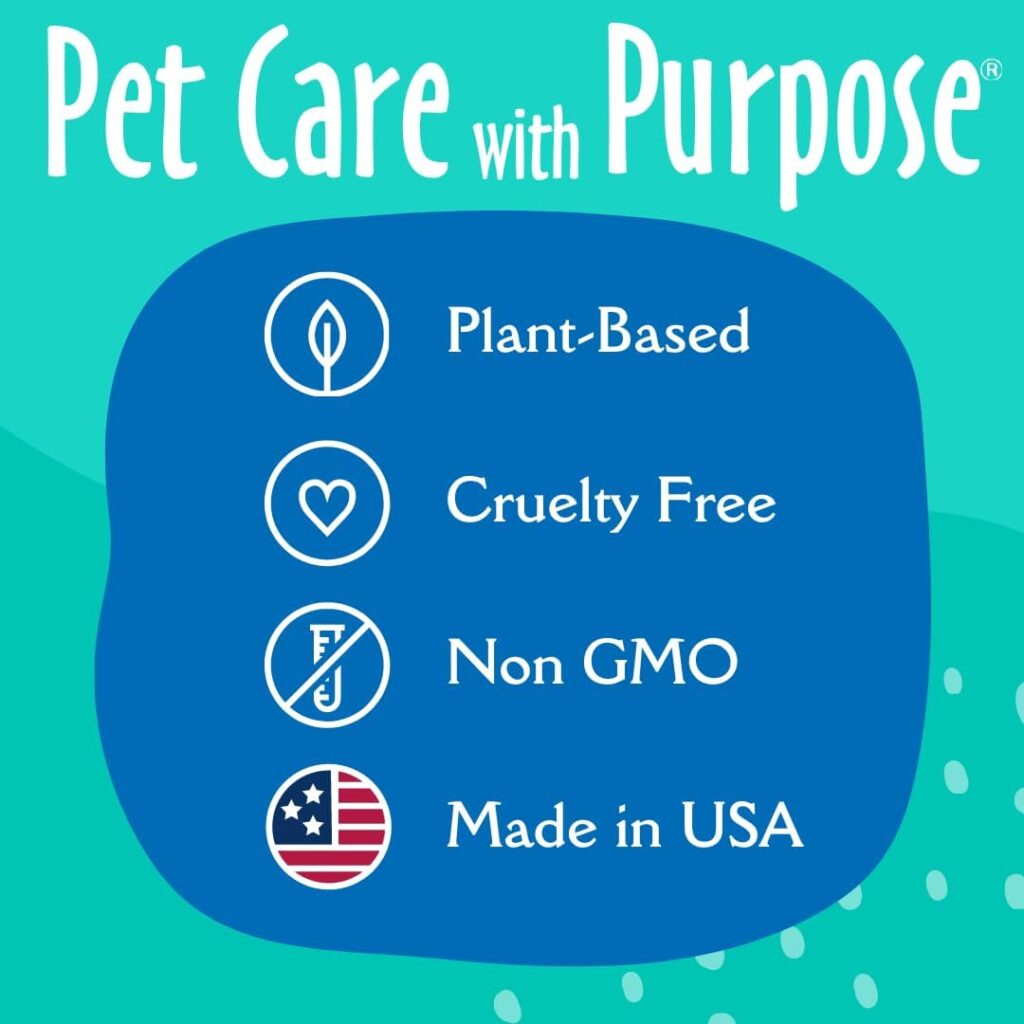
Make sure the water is lukewarm—not too hot or cold. Wet your dog thoroughly, avoiding their face, then work the shampoo into a good lather. Take your time massaging the shampoo into their coat, and be sure to rinse thoroughly to avoid any residue that could cause itching. After shampooing, you can also apply a conditioner like the Burt’s Bees for Dogs Natural Oatmeal Conditioner for extra softness.
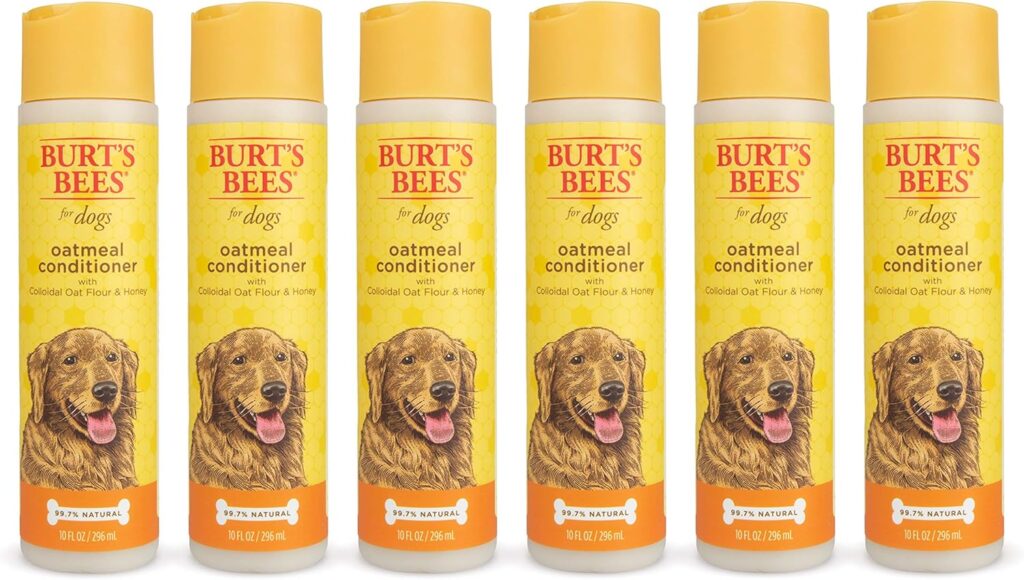

4. Drying Your Dog
After bathing, it’s important to dry your dog properly. You can use a towel to blot away excess water—don’t rub, as that can lead to tangling. For faster drying, use a high-velocity dog dryer. The SHELANDY Adjustable Dog Dryer (link to Amazon) is highly recommended on Amazon and comes with different nozzles for a personalized drying experience.
If your dog is nervous around the dryer, take it slow, use low settings, and offer treats as a positive distraction. Make sure to avoid pointing the dryer directly at their face or sensitive areas.
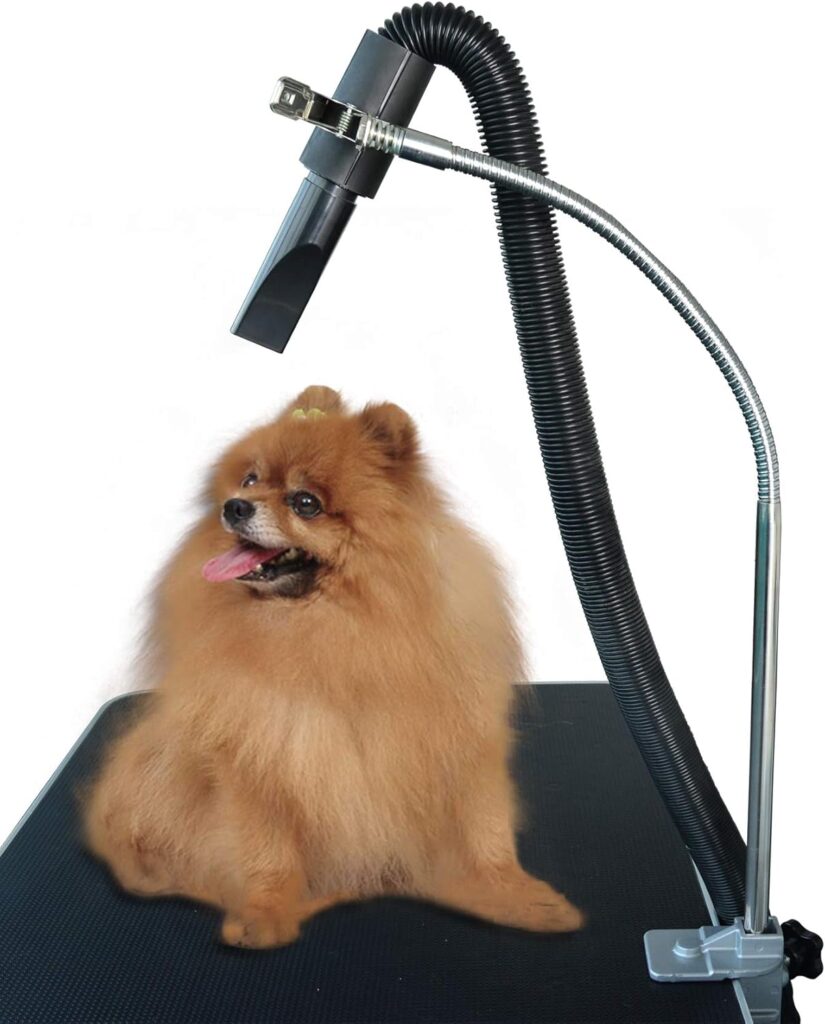
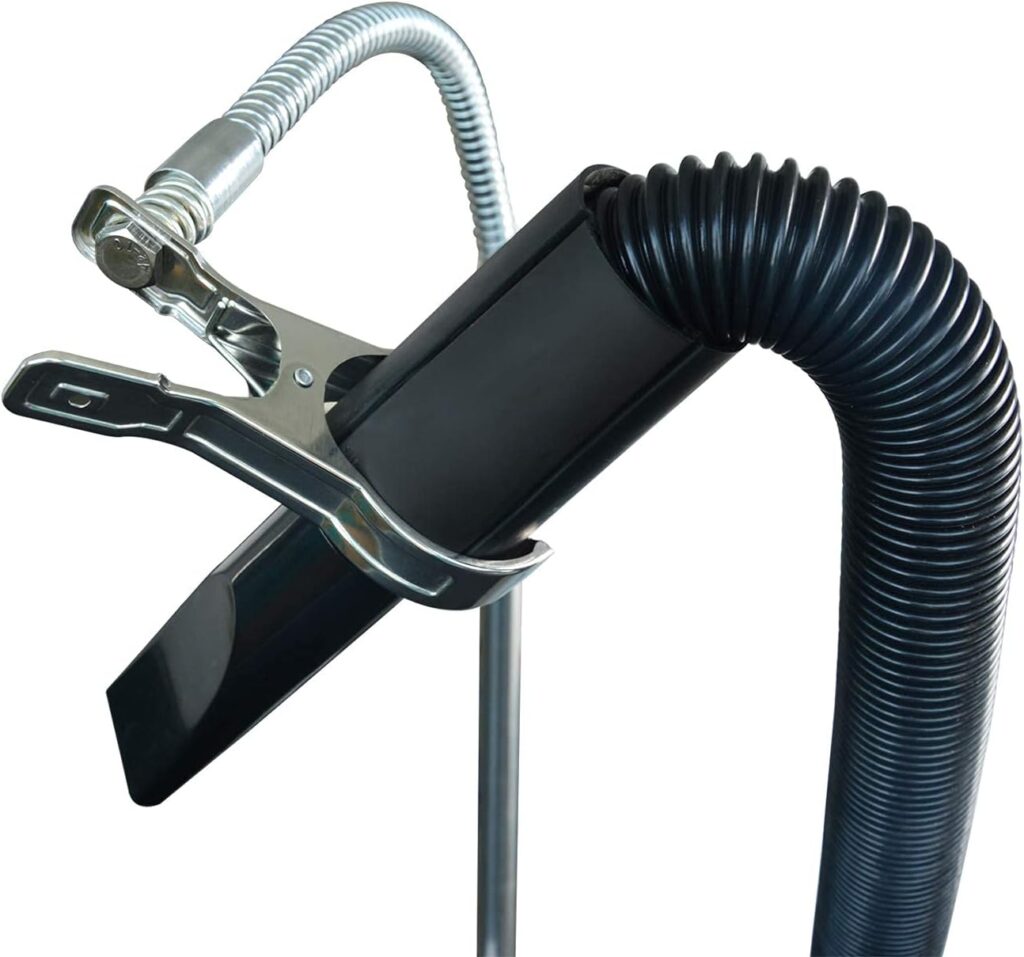
5. Trimming Your Dog’s Nails
Nail trimming is a vital part of grooming that many dog owners find intimidating. Overgrown nails can lead to discomfort, joint issues, or even injury. A dog nail clipper like the Boshel Dog Nail Clippers (link to Amazon) works well for most dogs and includes a safety guard to help prevent over-cutting.
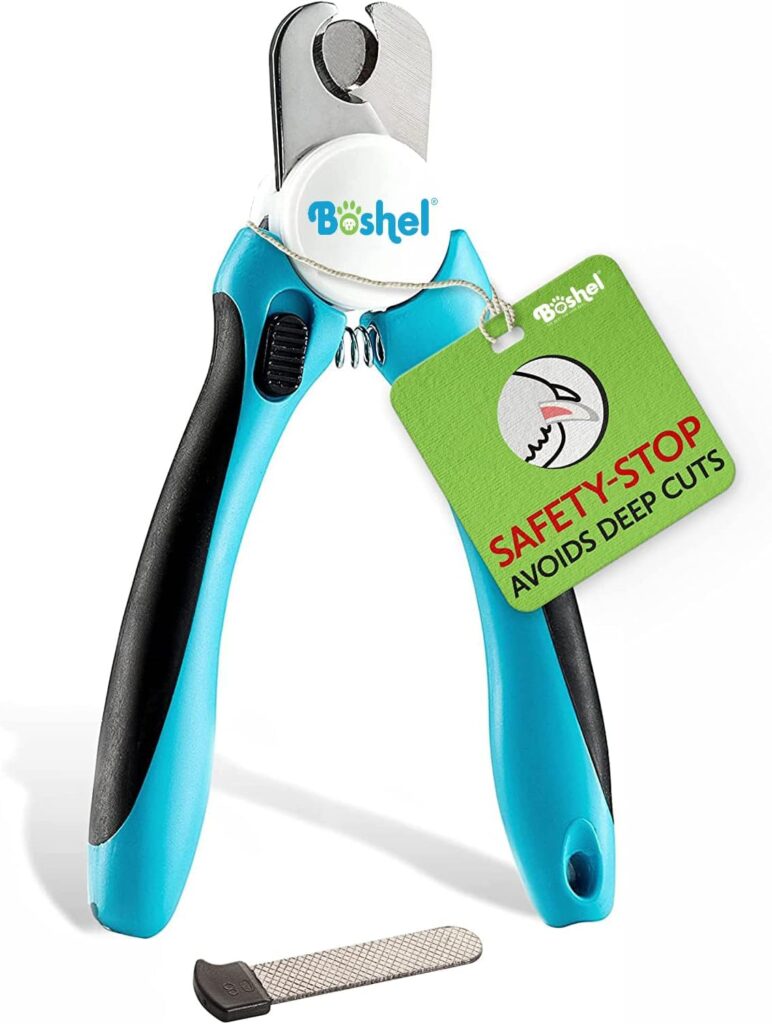
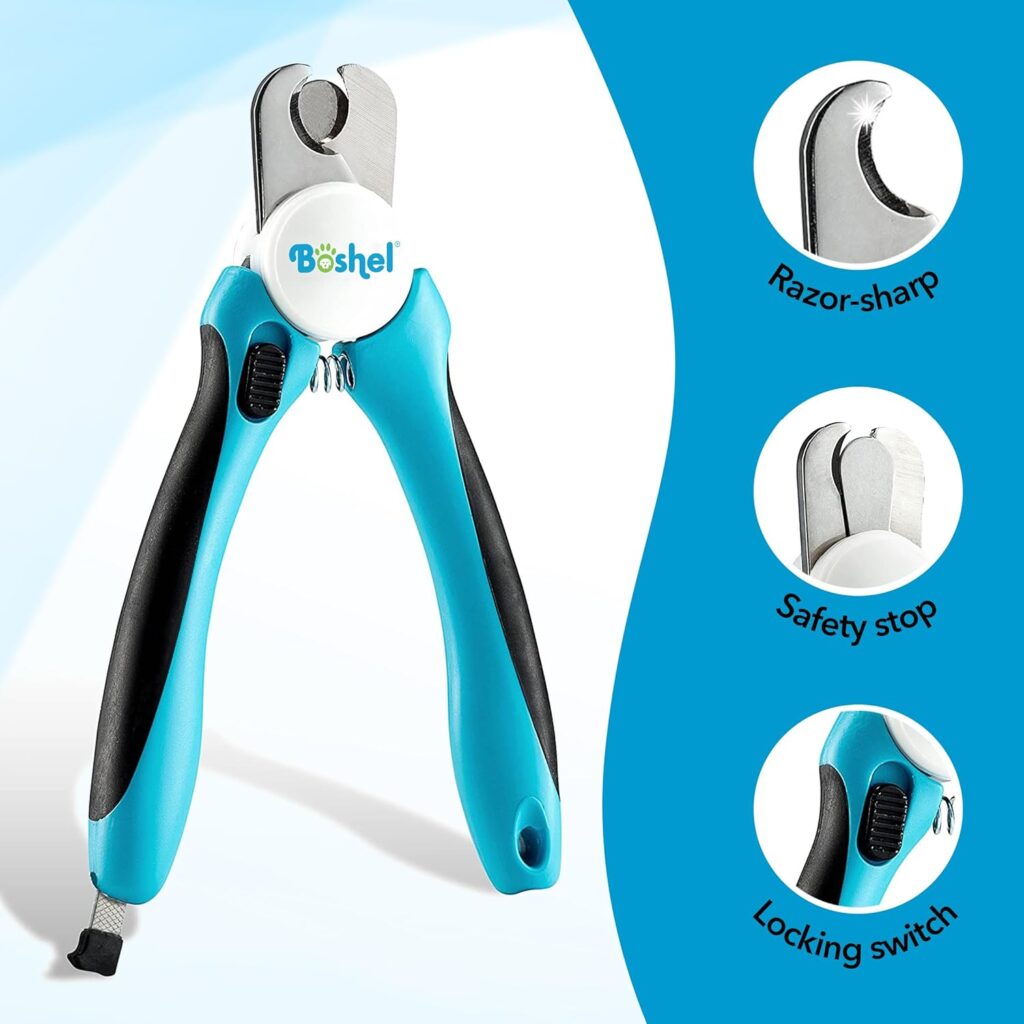
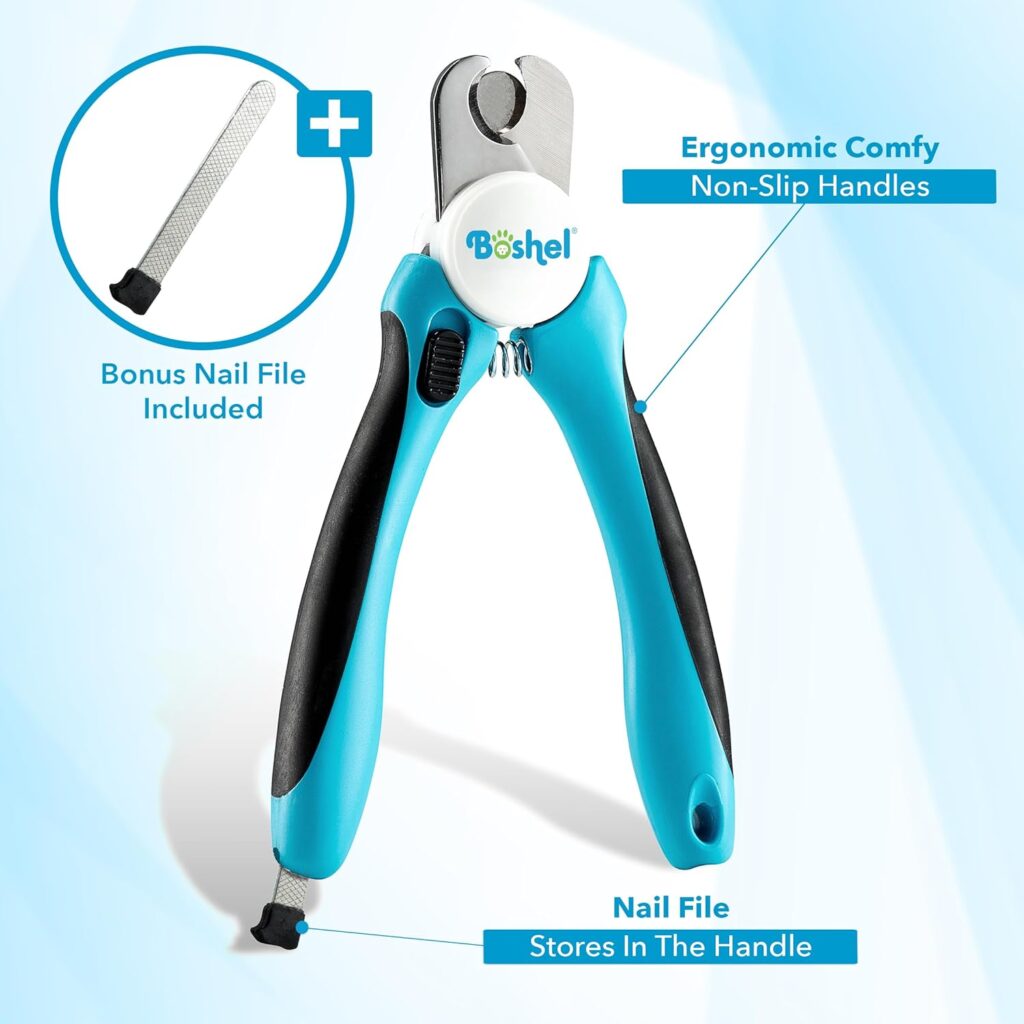
Alternatively, you can use a nail grinder like the Dremel 7350-PT Dog Nail Grinder. This tool is gentle, and highly rated by pet owners, and is a great option if your dog is nervous about nail clippers. Always take off a small amount at a time to avoid cutting the quick, which is painful and can lead to bleeding.
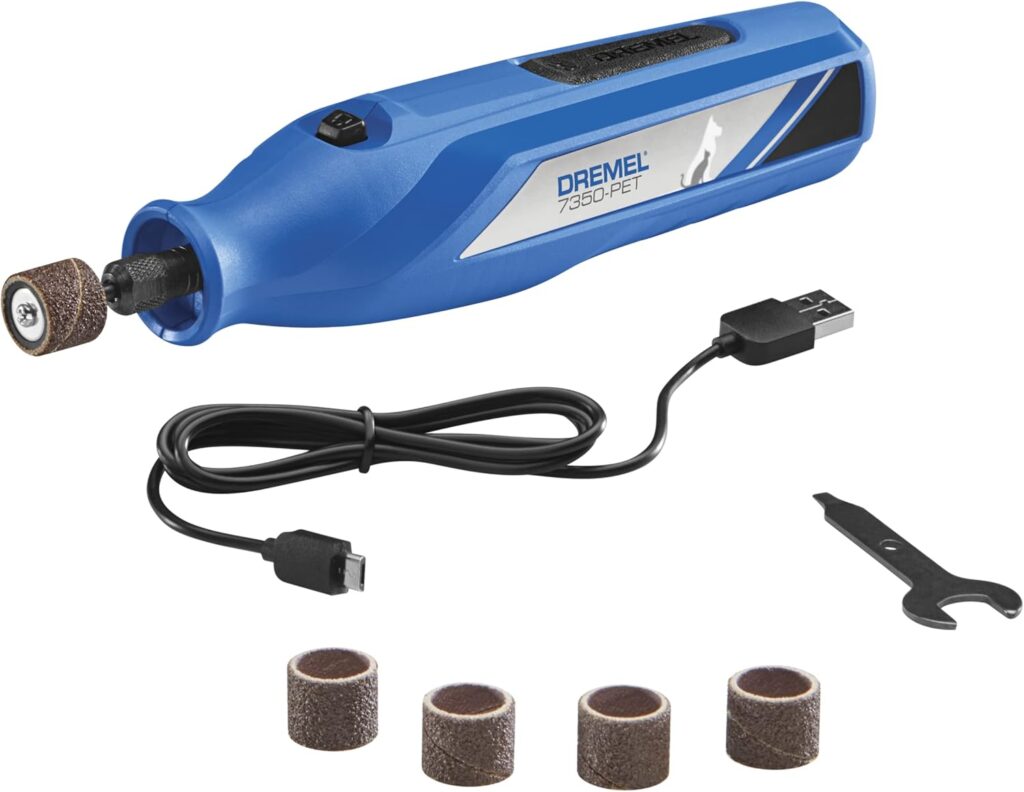
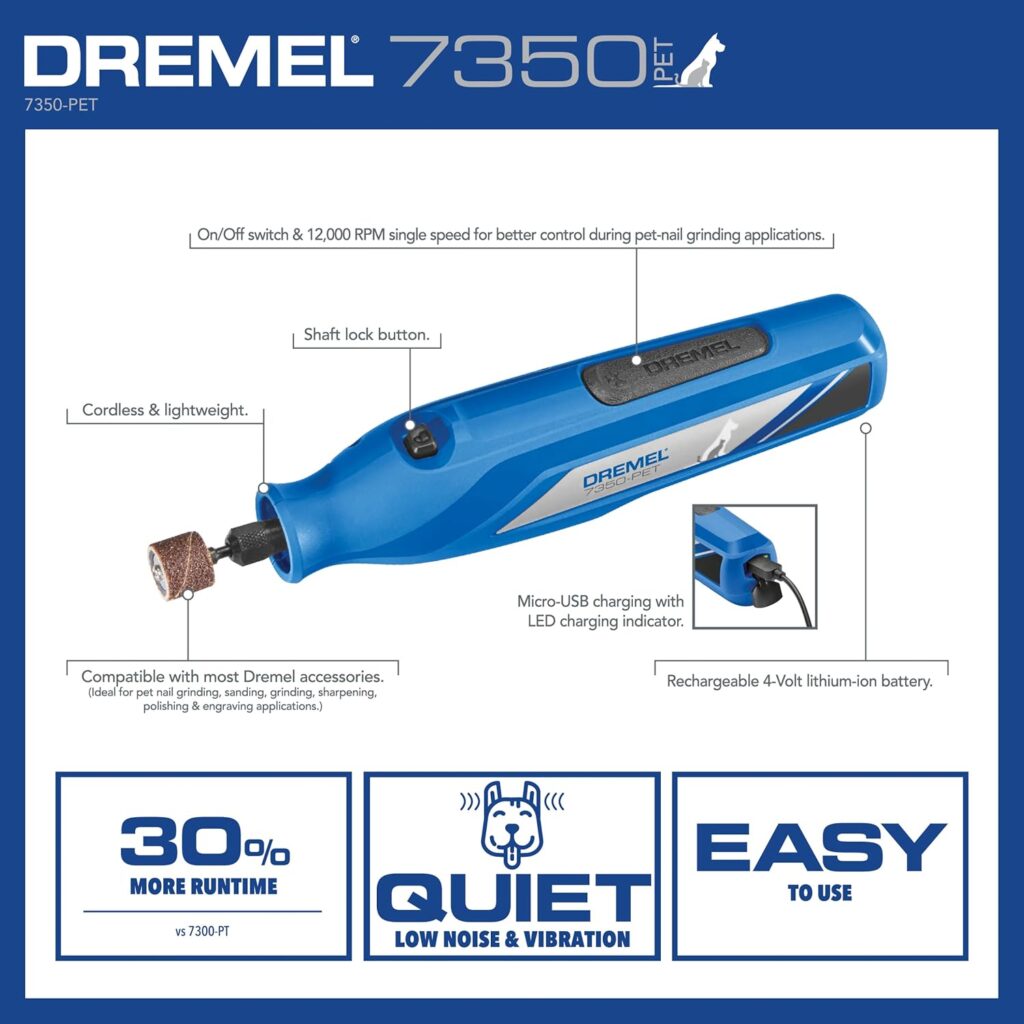
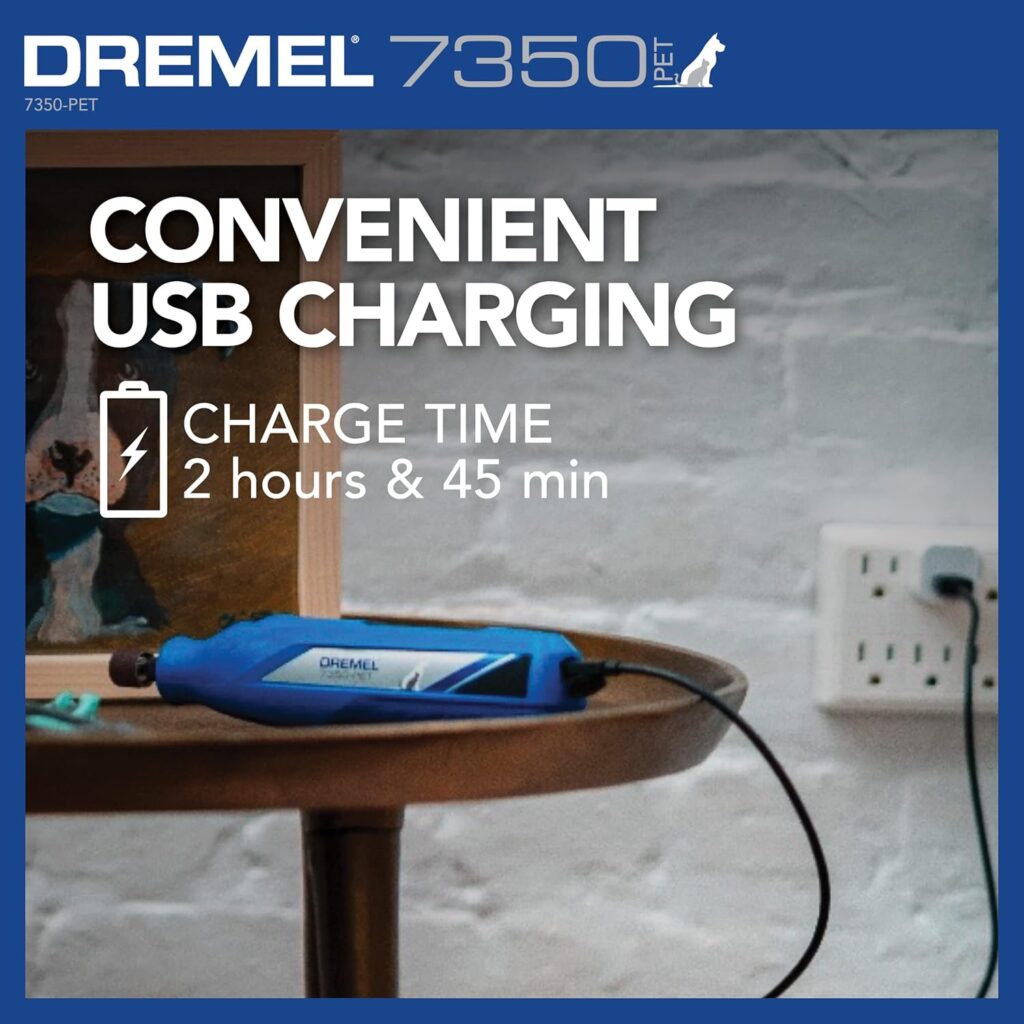
6. Ear Cleaning
Cleaning your dog’s ears is important for preventing ear infections, especially for dogs with floppy ears or those prone to moisture buildup. Use an ear cleaning solution like the Zymox Pet Ear Cleanser, (link to Amazon) which is known for its gentle yet effective formula.
Saturate a cotton ball (link to Amazon) with the solution and gently wipe the inside of the ear flap. Never insert anything deep into your dog’s ear canal. Be gentle, and make sure your dog is comfortable. Reward your pup afterward for good behavior.
7. Teeth Cleaning
Dental hygiene is a crucial, often-overlooked part of dog grooming. To prevent gum disease and tooth decay, aim to brush your dog’s teeth a few times a week. Use dog toothpaste—never human toothpaste, as it contains ingredients toxic to dogs. The Virbac C.E.T. Enzymatic Dog Toothpaste (Amazon link) is a favorite among dog owners.
Pair it with a dog toothbrush (link to various types on Amazon) like the Petrodex Finger Toothbrush, which can make it easier to reach your dog’s teeth. If your dog doesn’t tolerate brushing, consider dental chews like the Greenies Dental Treats (link to Amazon) to help reduce plaque buildup.
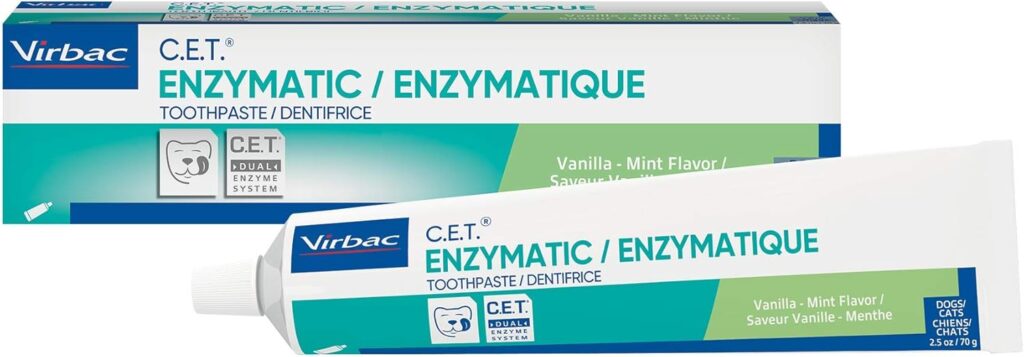
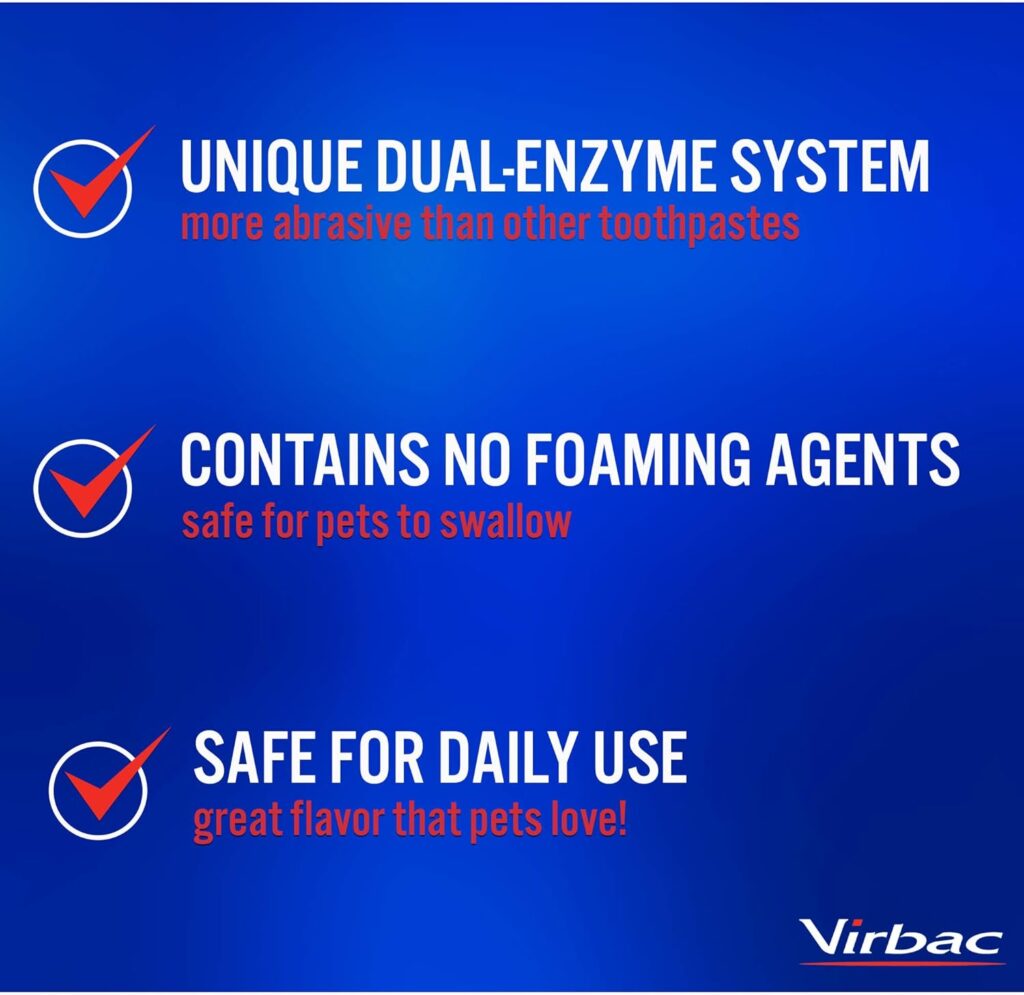
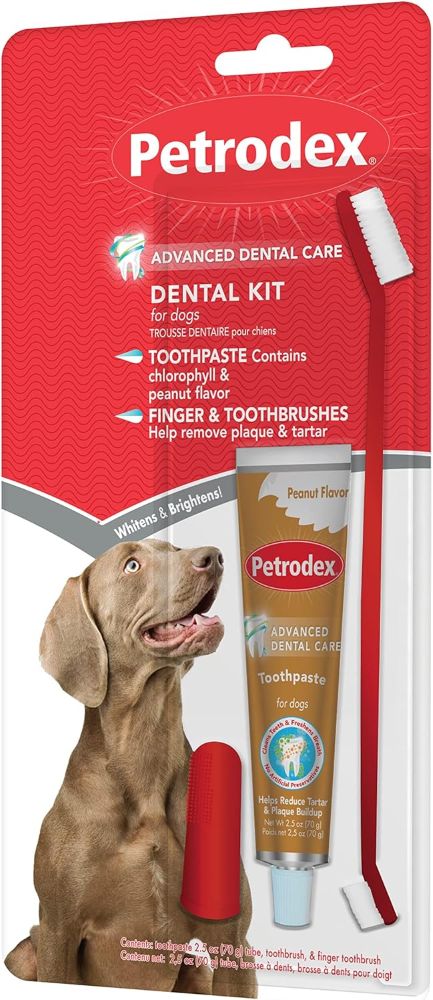
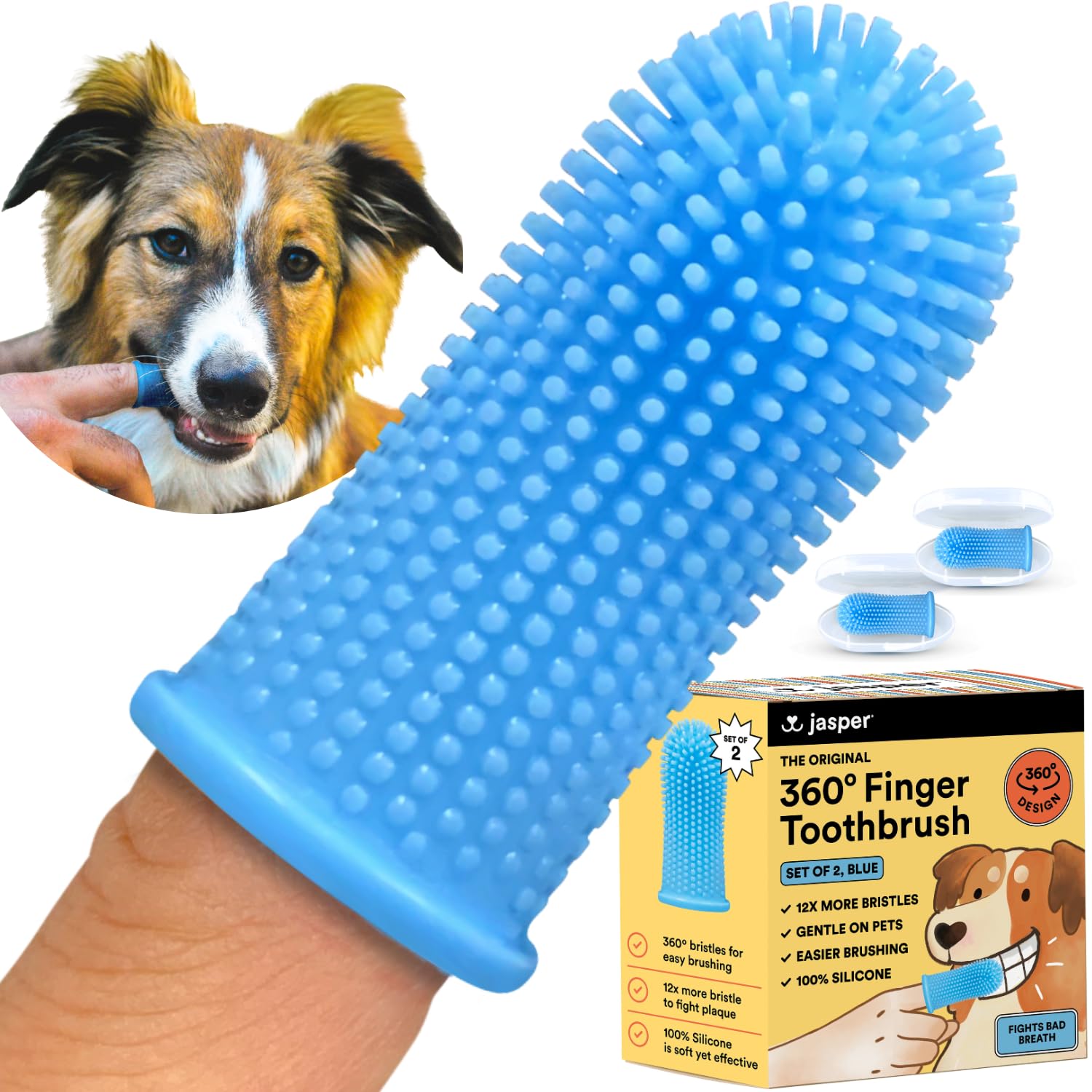
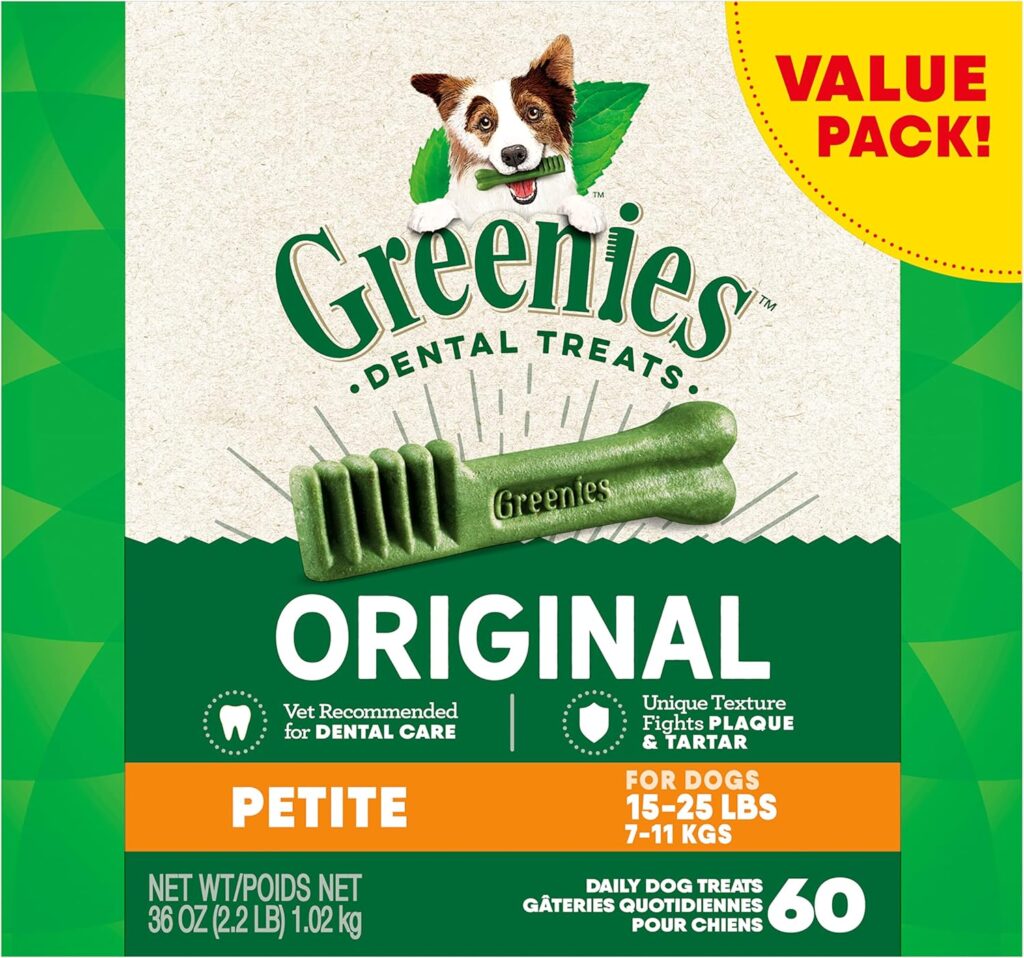
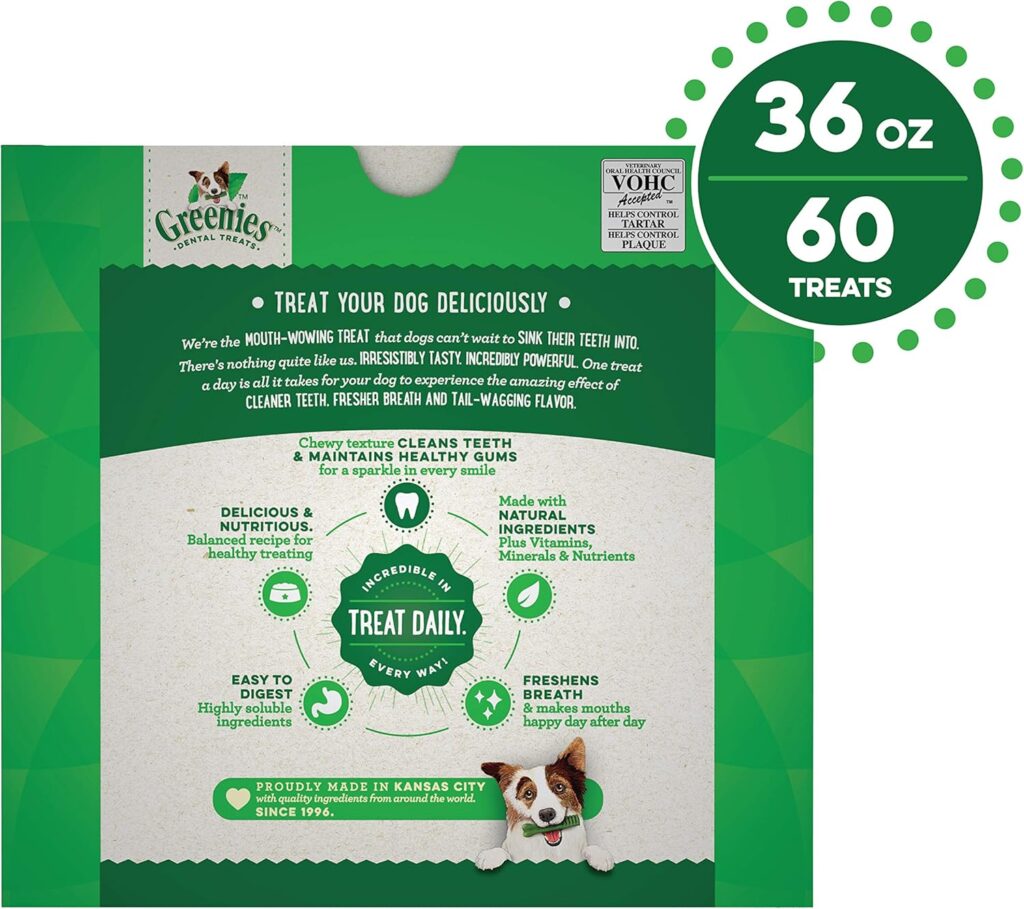
8. Grooming
If your dog’s coat grows quickly, you might need to trim some areas in between visits to the groomer. Areas like the paws, around the face, and under the belly may require trimming more frequently. You can use a pair of grooming scissors or clippers like the Andis UltraEdge Clipper (links to Amazon) for this job.
If you’re new to trimming, take it slowly, and be sure to use rounded-tip scissors (link to Amazon) in delicate areas. Clippers are great for larger trimming jobs, but make sure to choose a clipper designed for your dog’s coat type. For instance, if your dog has a thick or double coat, you need a powerful clipper to get through all those layers.
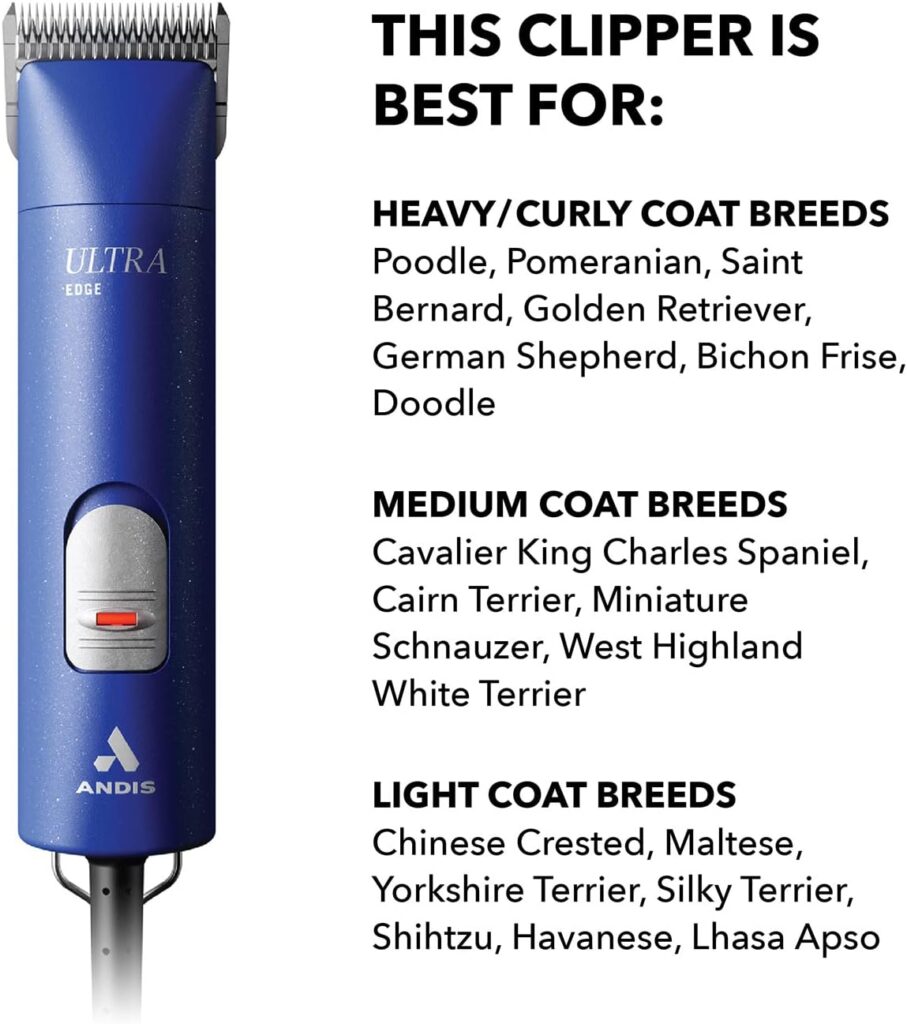
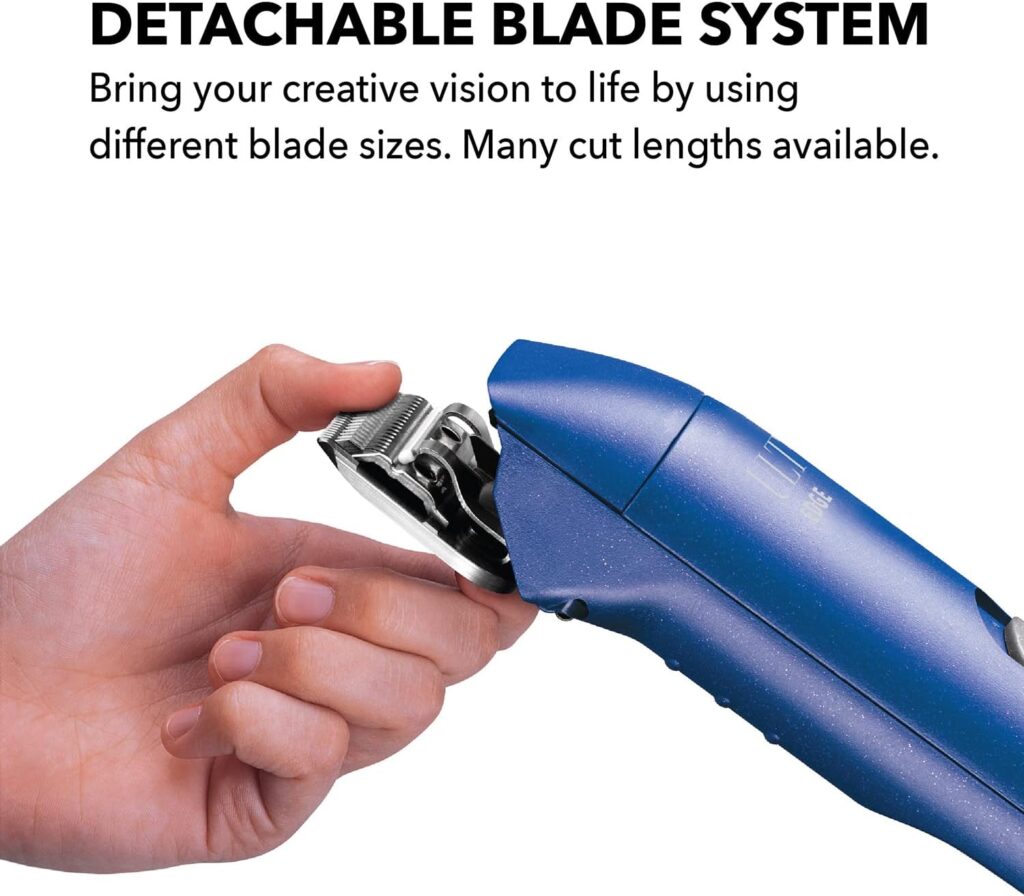
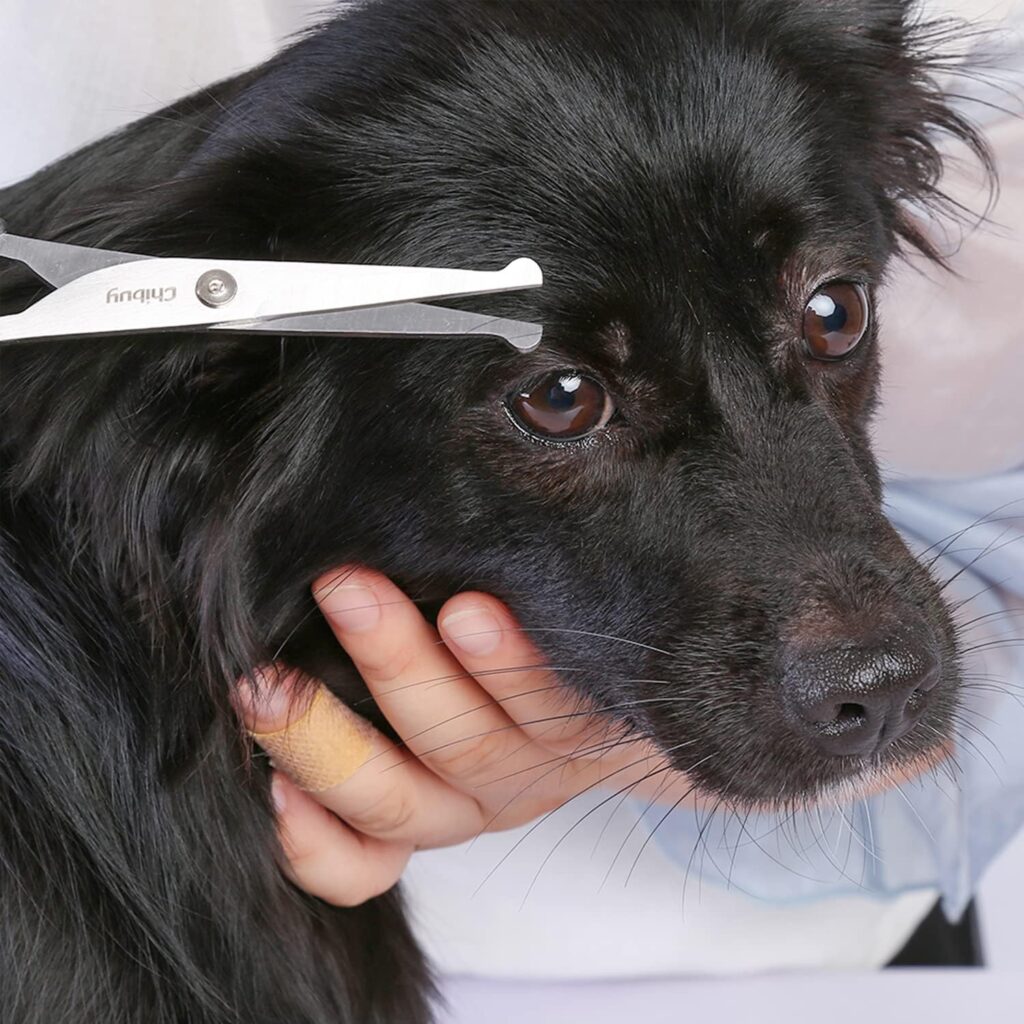
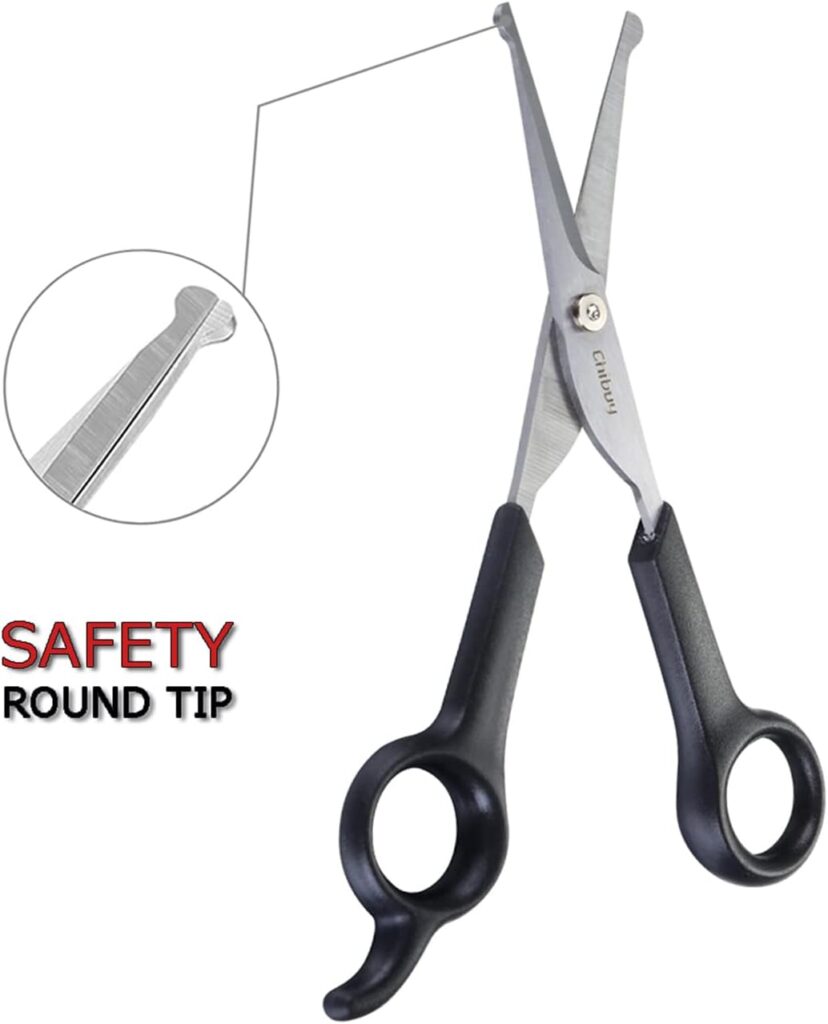
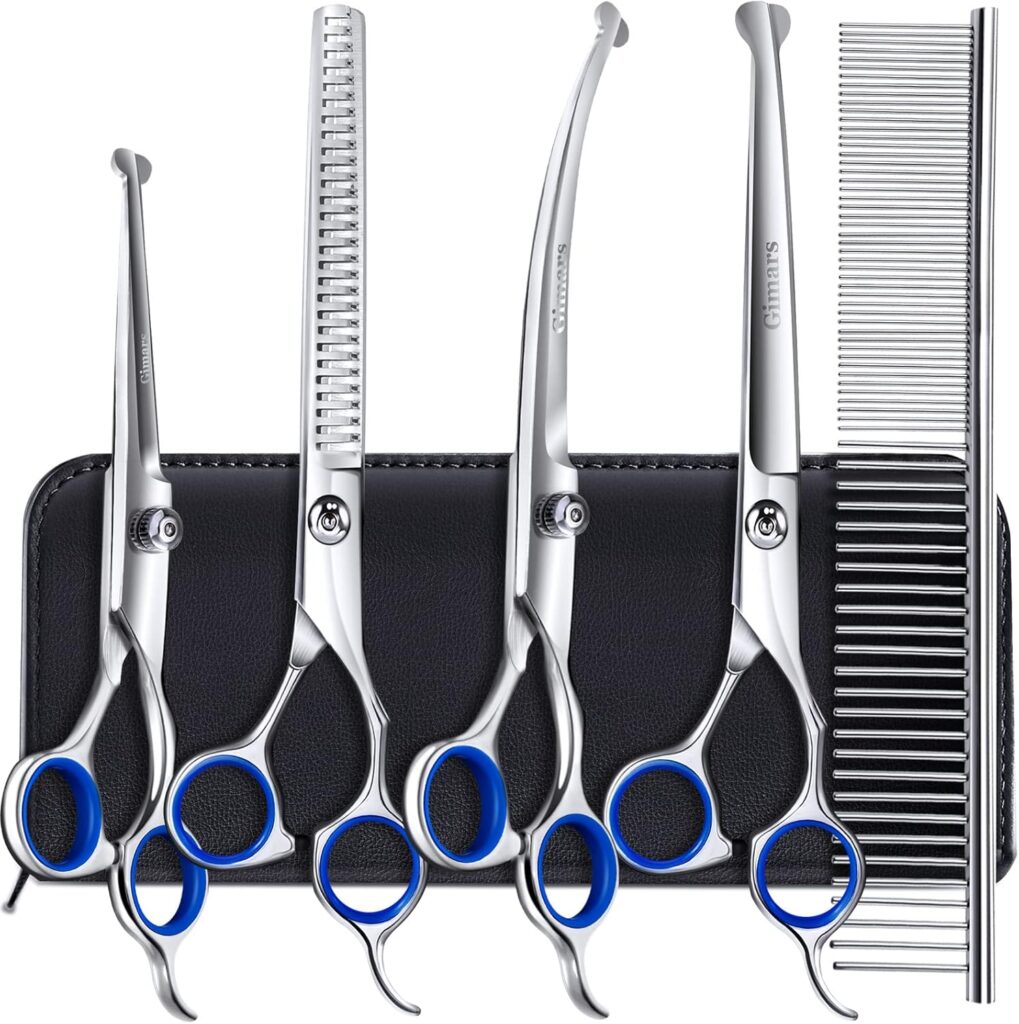
9. Paw Care
Your dog’s paws take a lot of wear and tear, so don’t forget to check and care for them during grooming sessions. Trimming the fur between the paw pads will prevent mats from forming and help keep your dog from slipping on smooth surfaces. If you’re trimming paw hair, use the ConairPRO Dog Rounded-Tip Shears for extra safety.
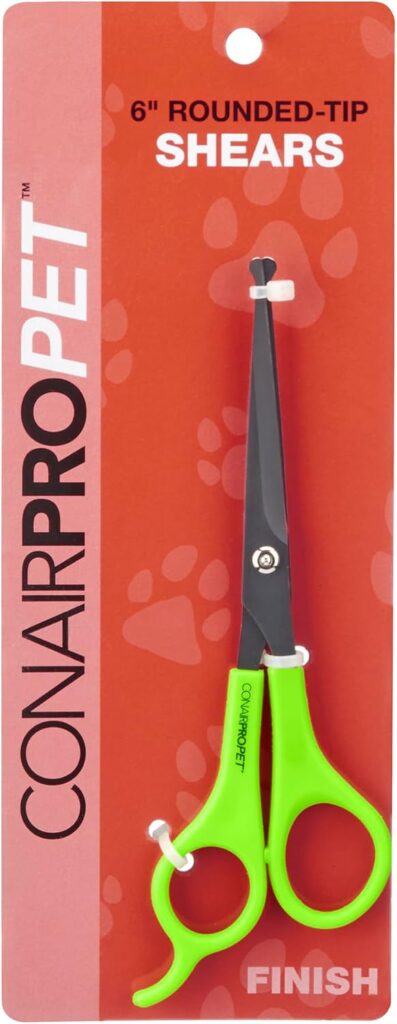
Check for dry or cracked paw pads, especially in winter. You can use paw balm like Musher’s Secret Dog Paw Wax to keep your dog’s paw pads soft and prevent cracking.
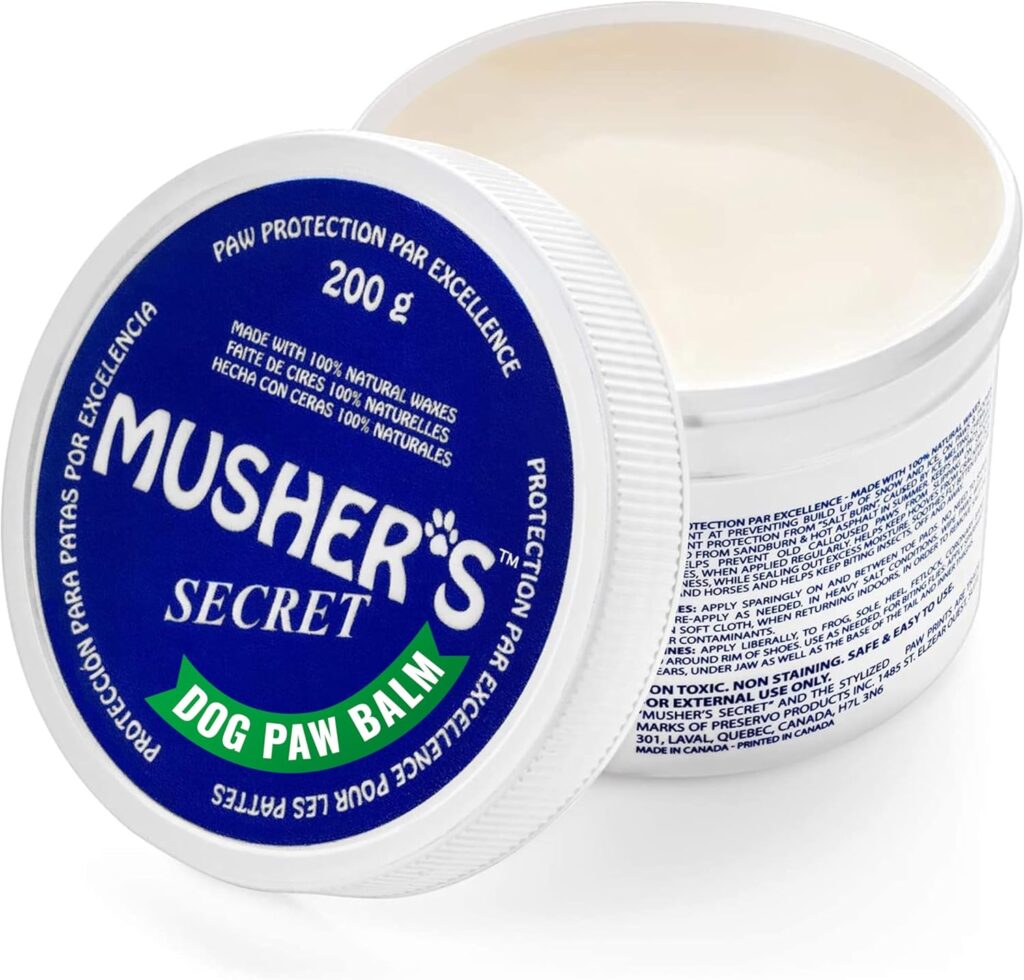
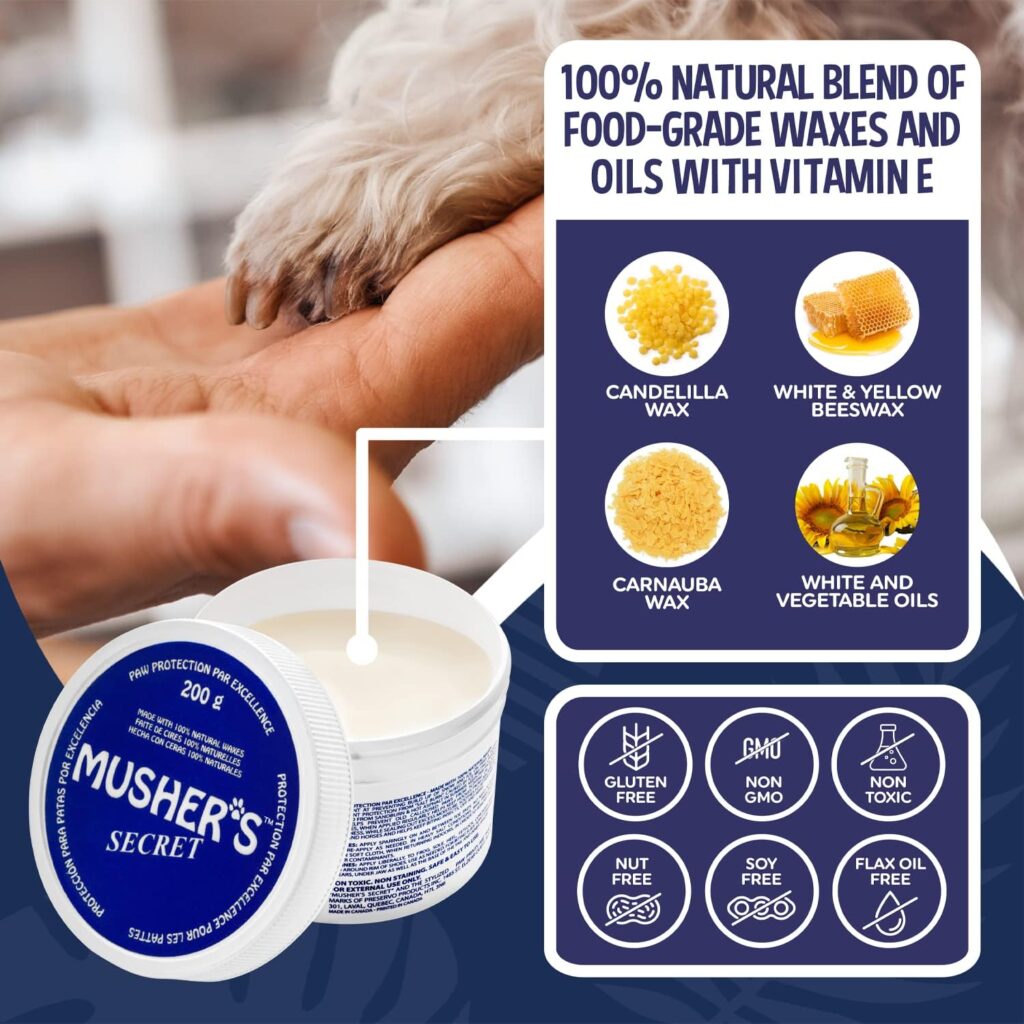
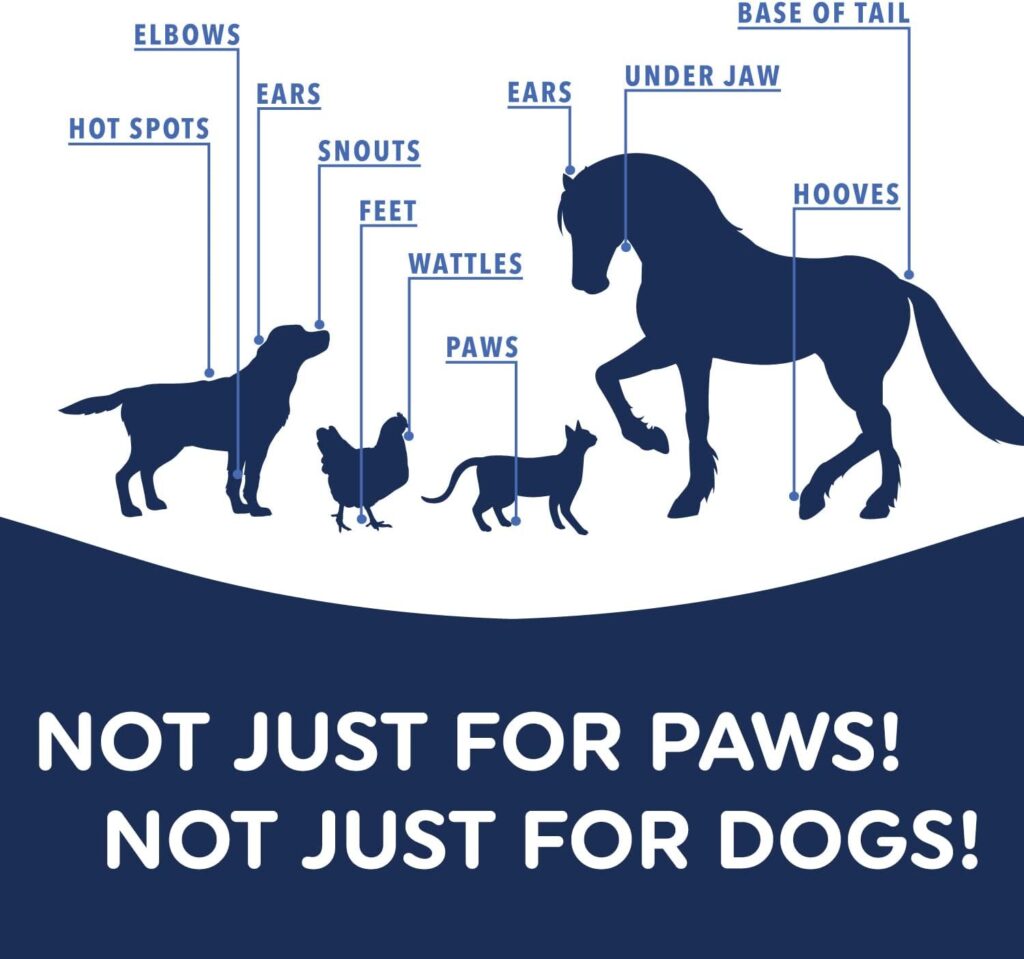
10. Dealing with Shedding
Shedding can be a major issue, particularly if you have a double-coated breed. To manage shedding, frequent brushing is key, but you might also want to invest in a deshedding tool like the FURminator Deshedding Tool, which can remove undercoat fur before it ends up all over your home.
Another option is using an anti-shedding spray. The TropiClean Lime & Coconut Shed Control Conditioner (links to Amazon) helps keep your dog’s coat healthy and can reduce shedding between grooming sessions.
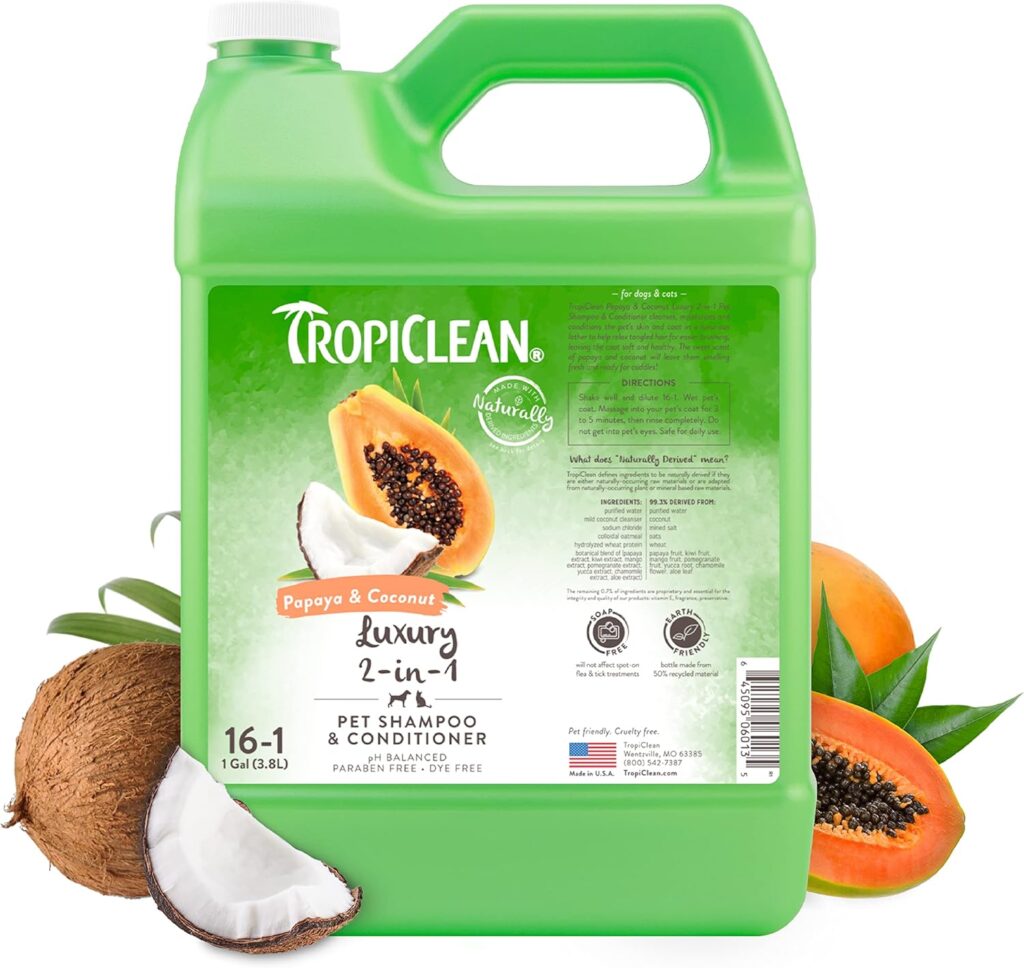
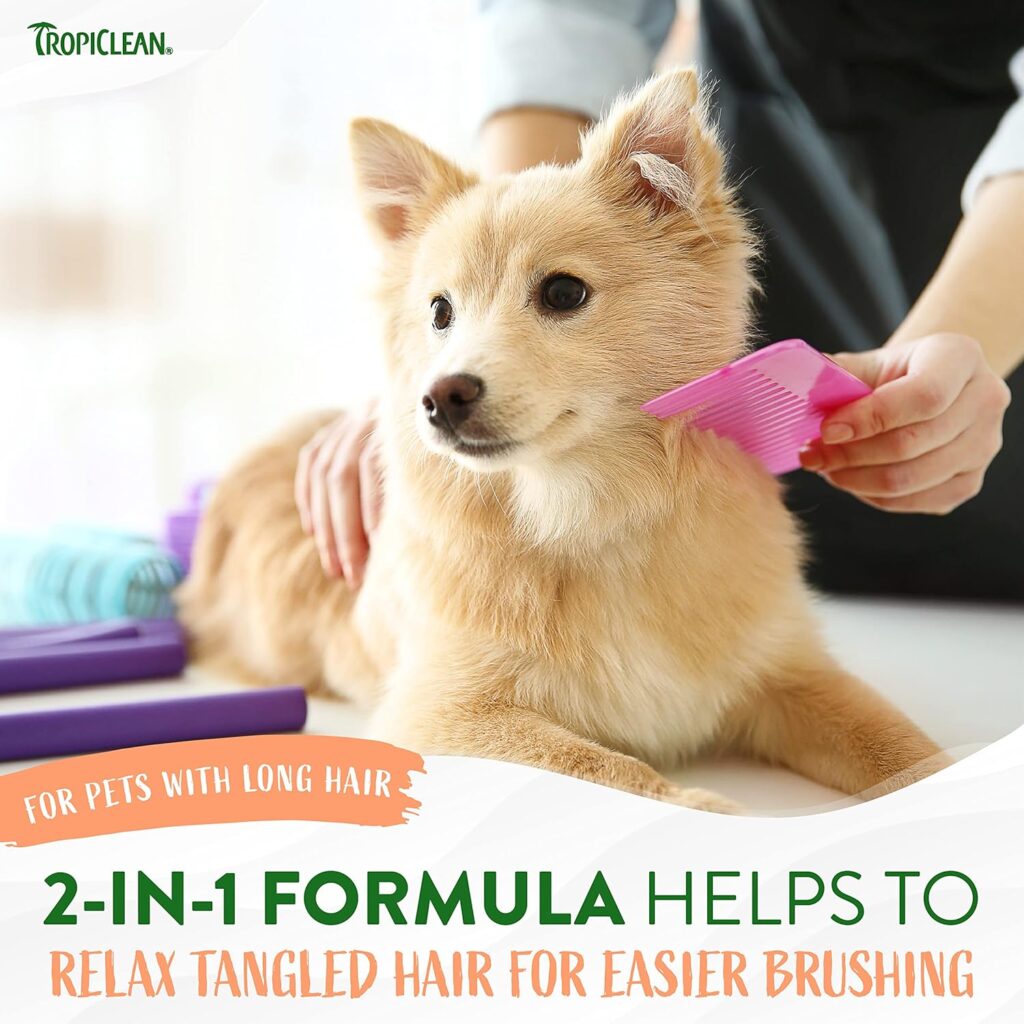
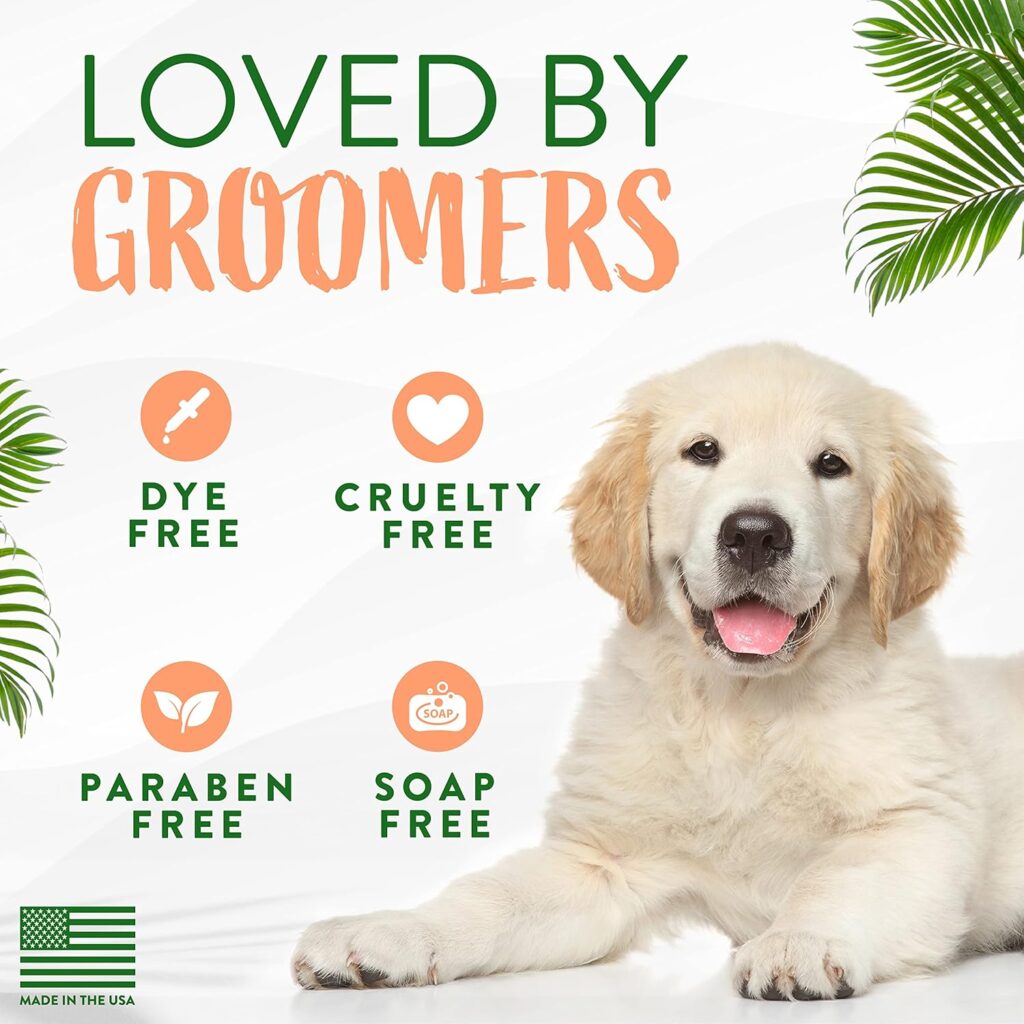
11. Keeping Your Dog Calm
If your dog is new to grooming or gets nervous, you can make the experience more comfortable with a few calming strategies. Always start slow, introducing one grooming task at a time. Use plenty of positive reinforcement in the form of treats and verbal praise. Calming treats like the Zesty Paws Calming Bites can also help ease anxiety before a grooming session.
Consider playing calming music or using lavender spray (link to Amazon various products) to help your dog relax. Giving frequent breaks is also key. If your dog seems overwhelmed, it’s best to stop and continue later rather than force them to finish.
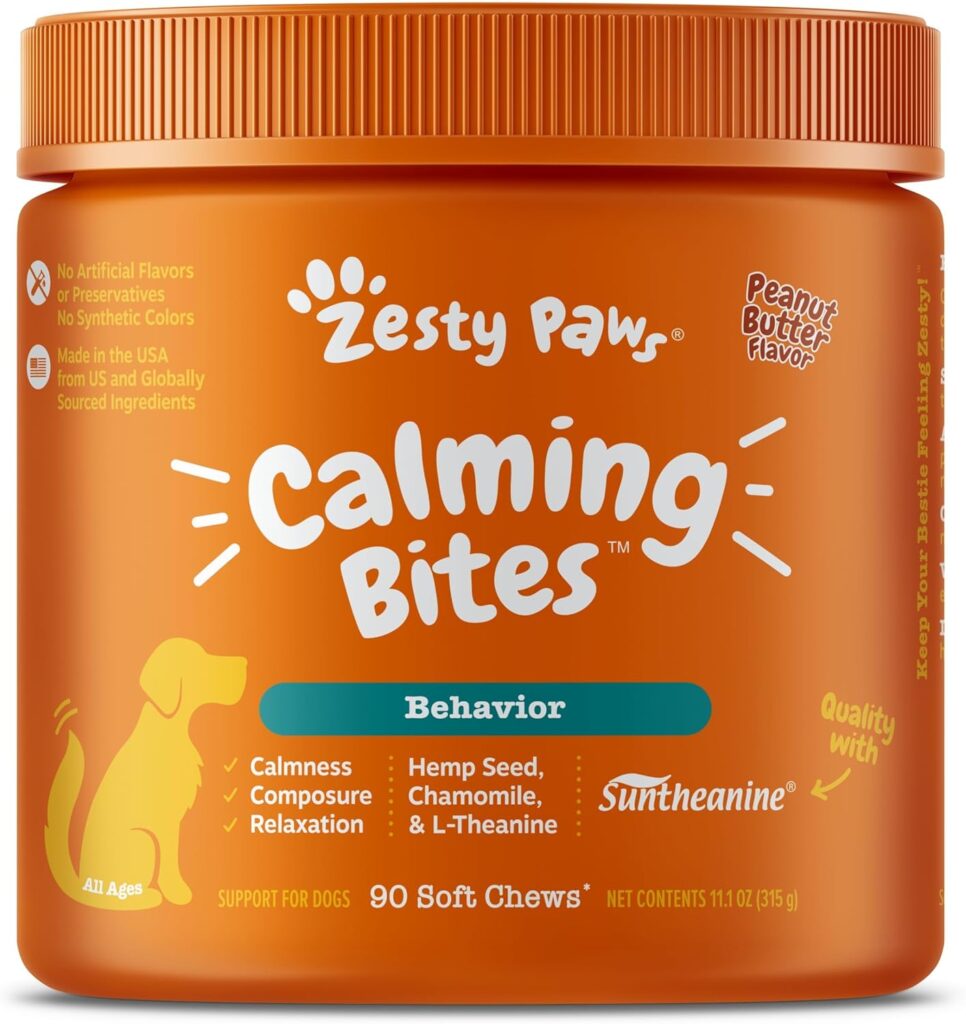
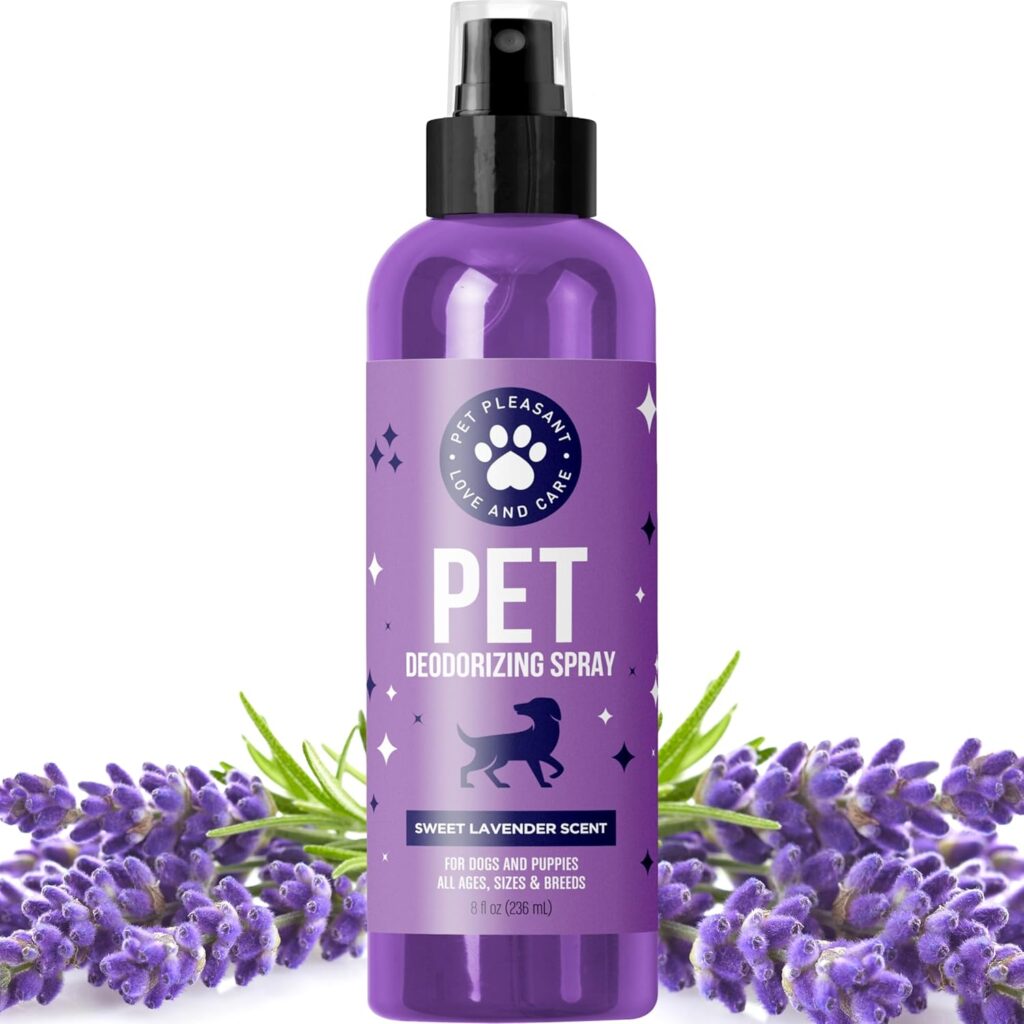
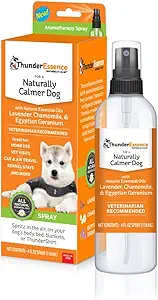
12. Finishing Touches
After all the steps are done, give your dog a good look-over. Make sure there are no missed tangles, and that your dog’s coat looks clean and tidy. You can also add a little bit of dog-safe cologne like the Bodhi Dog Pet Cologne for a pleasant finishing touch.
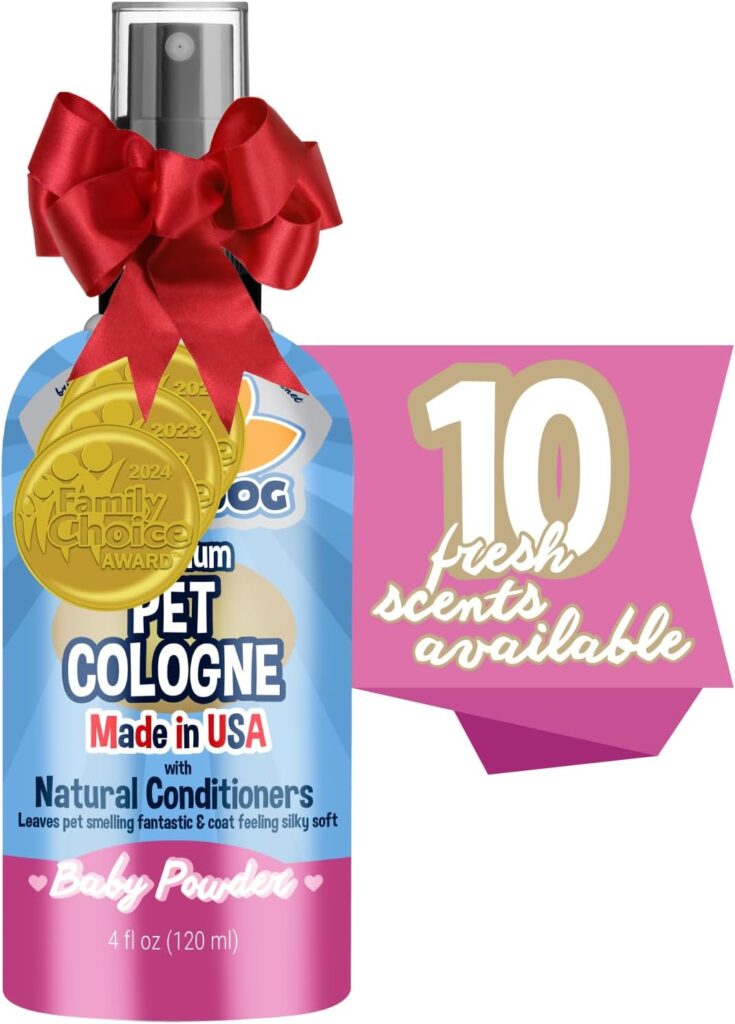
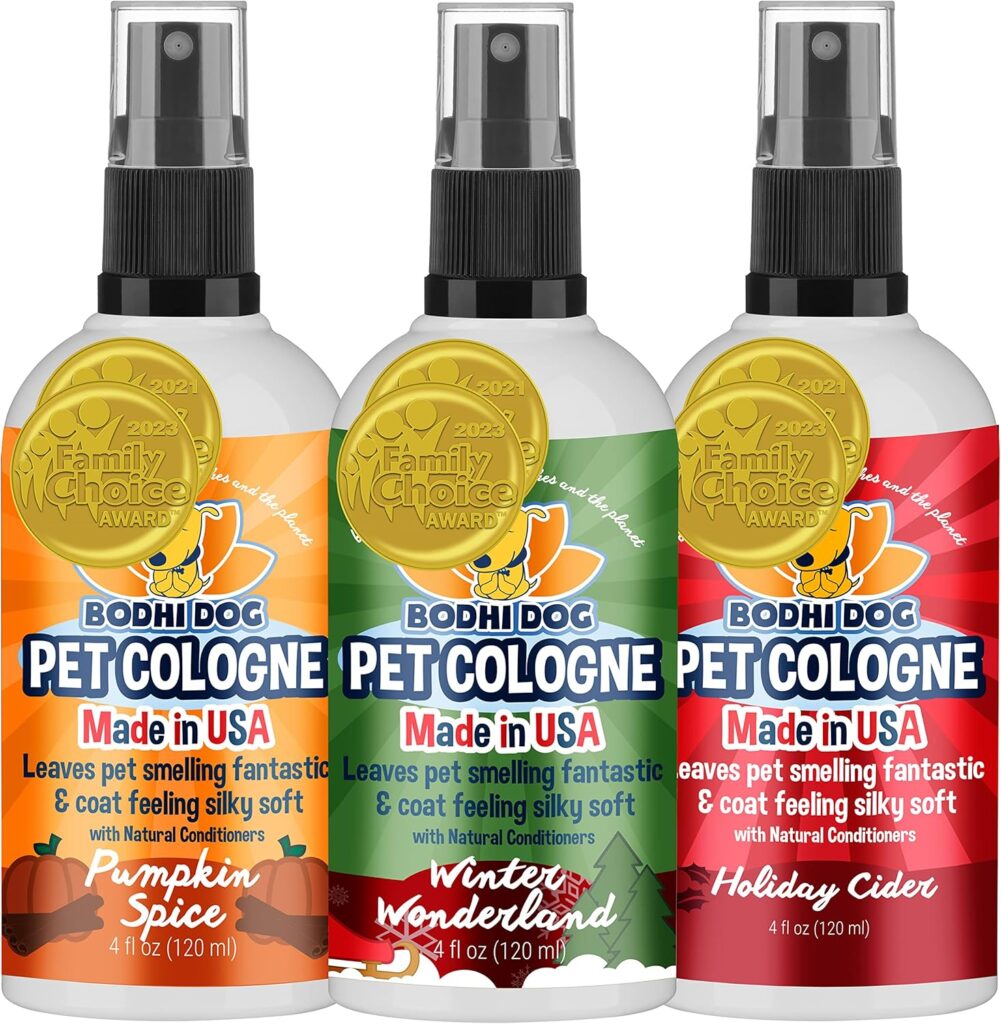
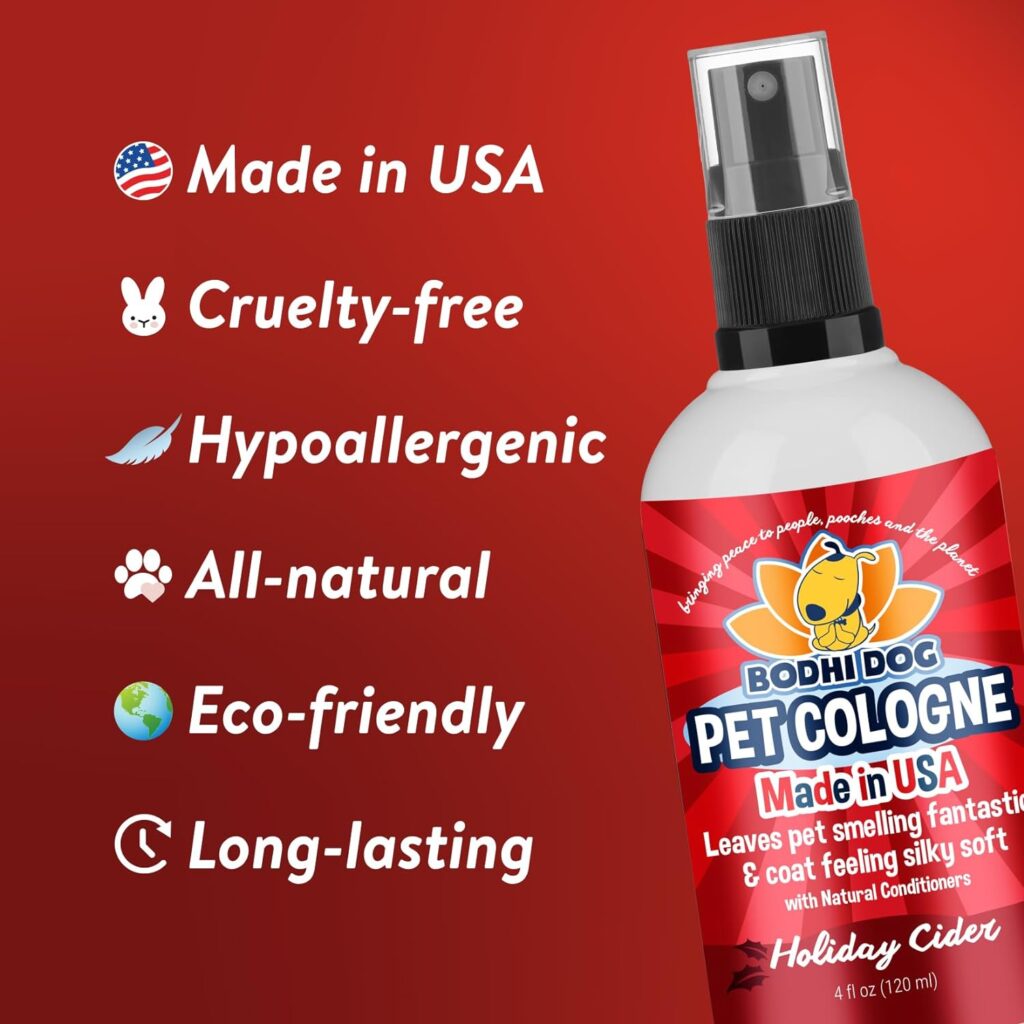
Benefits of Grooming Your Dog at Home
Grooming your dog at home not only saves you money but also provides an opportunity to build trust with your furry companion. When your dog gets used to you handling them, they feel more relaxed and safe, even during stressful situations like vet visits.
Additionally, regular grooming helps you keep track of your dog’s health. While grooming, you’re in the perfect position to check for any unusual bumps, skin issues, or parasites like ticks or fleas. Catching these issues early can make a huge difference for your dog’s well-being.
Tips for Success
- Patience is key: Grooming can take time, especially if you or your dog are new to it. Break grooming sessions into shorter segments if necessary.
- Reward generously: Reinforce good behavior with treats and praise throughout the process.
- Stay consistent: Create a grooming schedule and stick to it. Your dog will become more comfortable with routine grooming.
Conclusion
Grooming your dog at home is completely achievable with the right tools, patience, and a bit of practice. Not only will it save you money, but it will also strengthen your bond with your pet, ensuring they feel loved and cared for. Remember, every dog is unique, so adapt these grooming tips to suit your dog’s specific needs and comfort level. With time, you’ll become a grooming expert, and your dog will thank you for it with wagging tails and lots of affection.
If you’re ready to get started, try gathering the recommended tools and setting up a grooming routine. Happy grooming!

